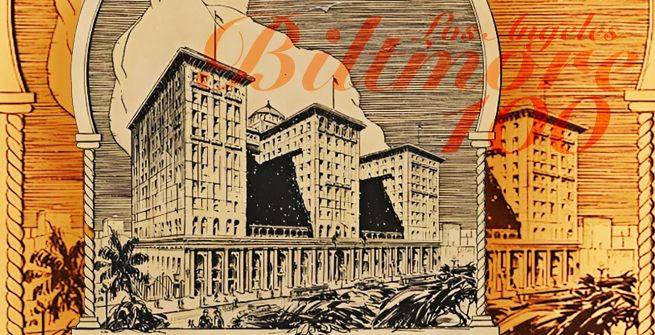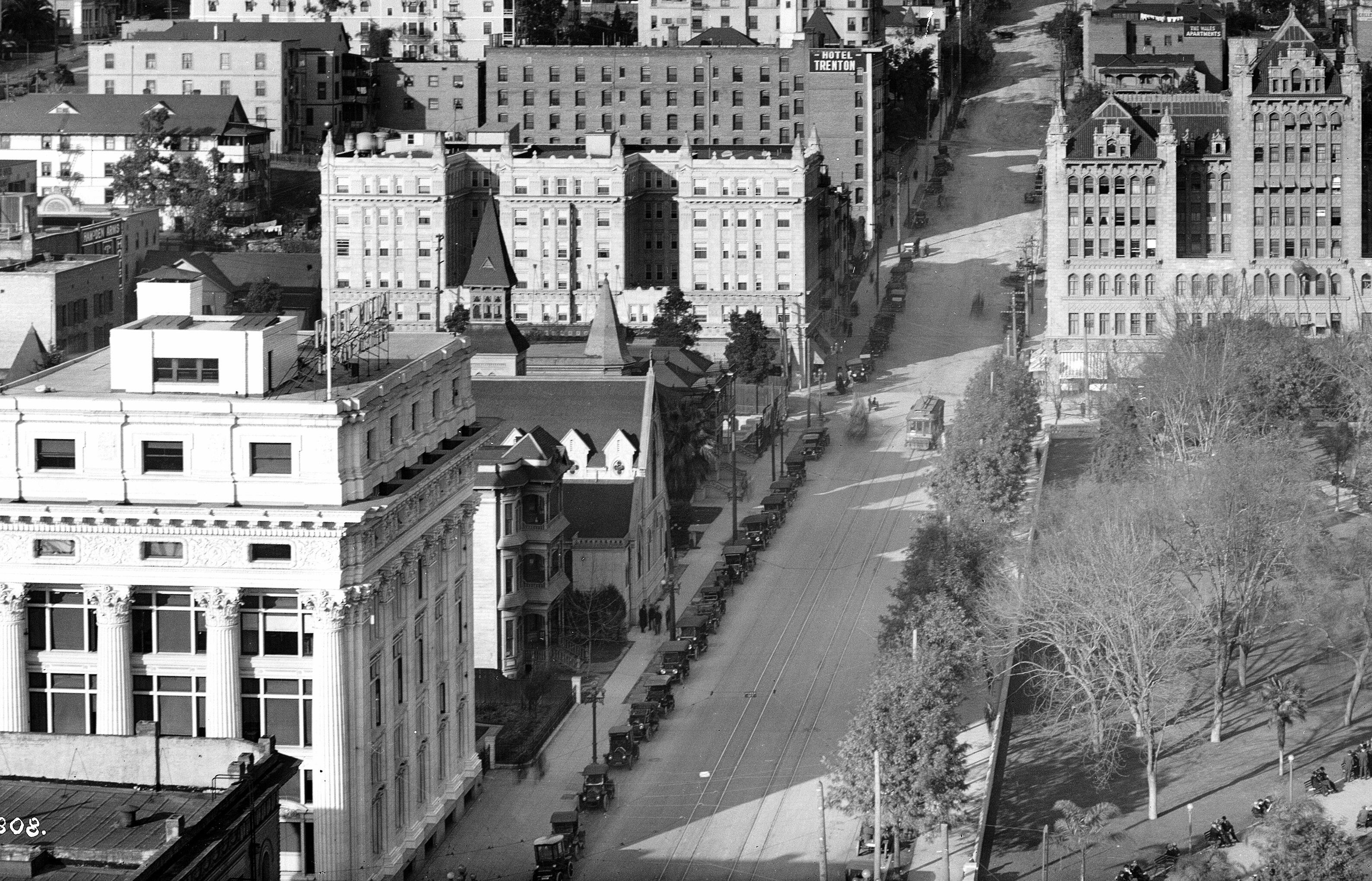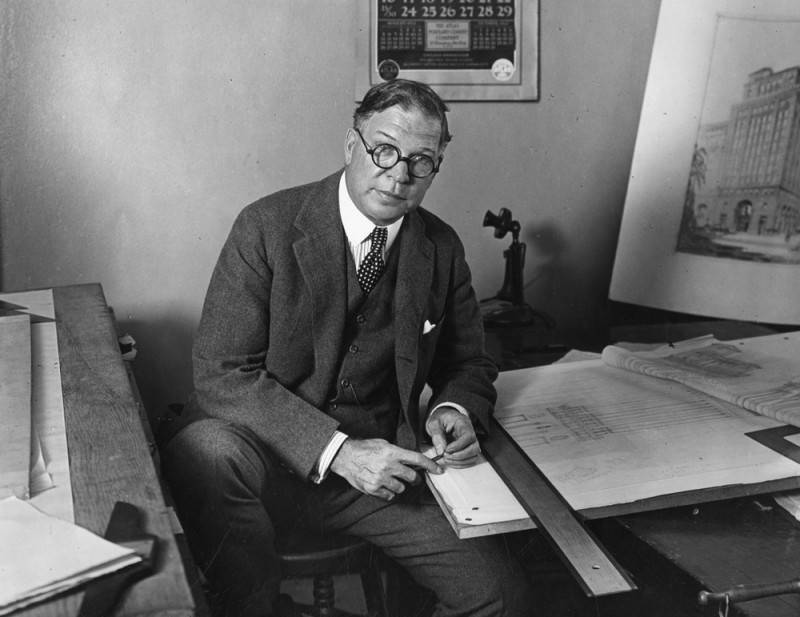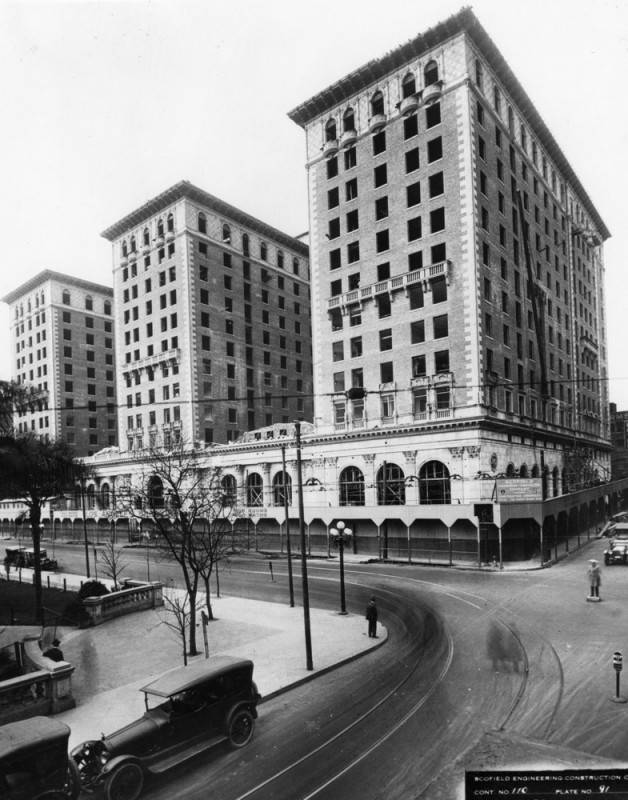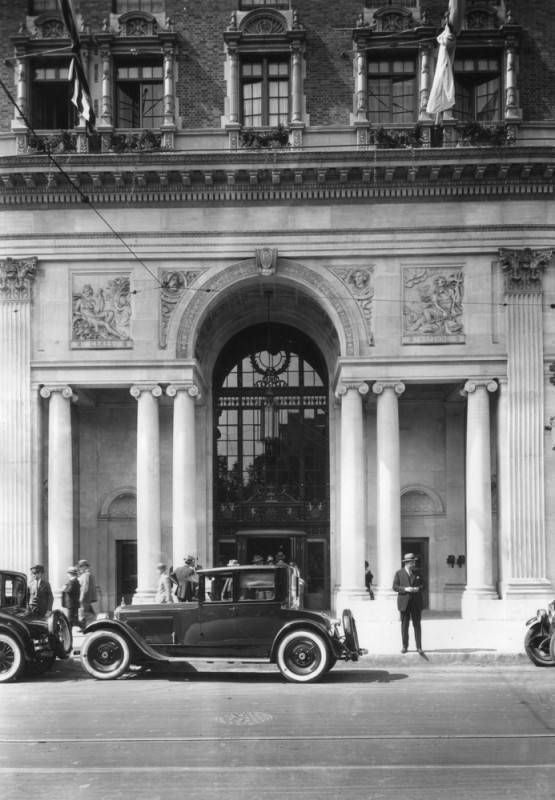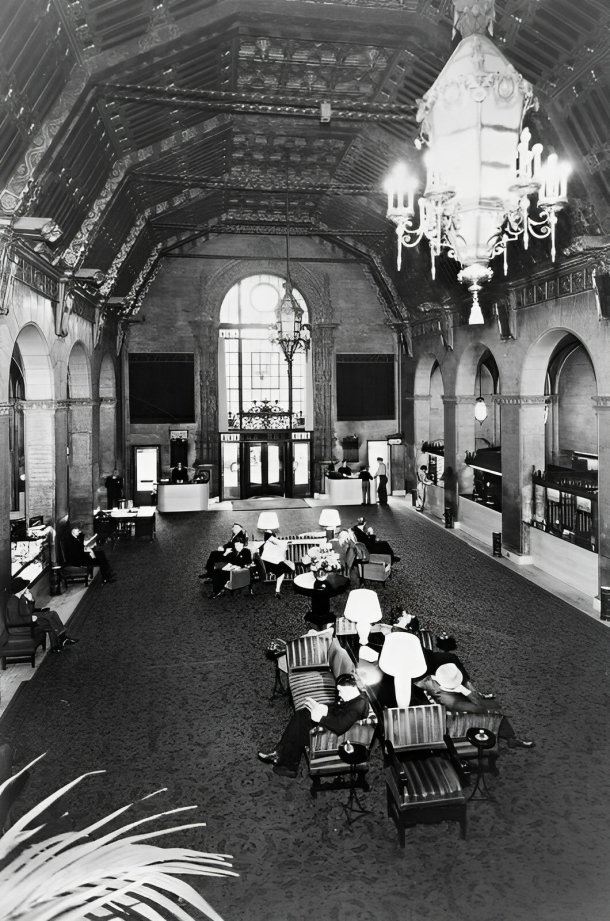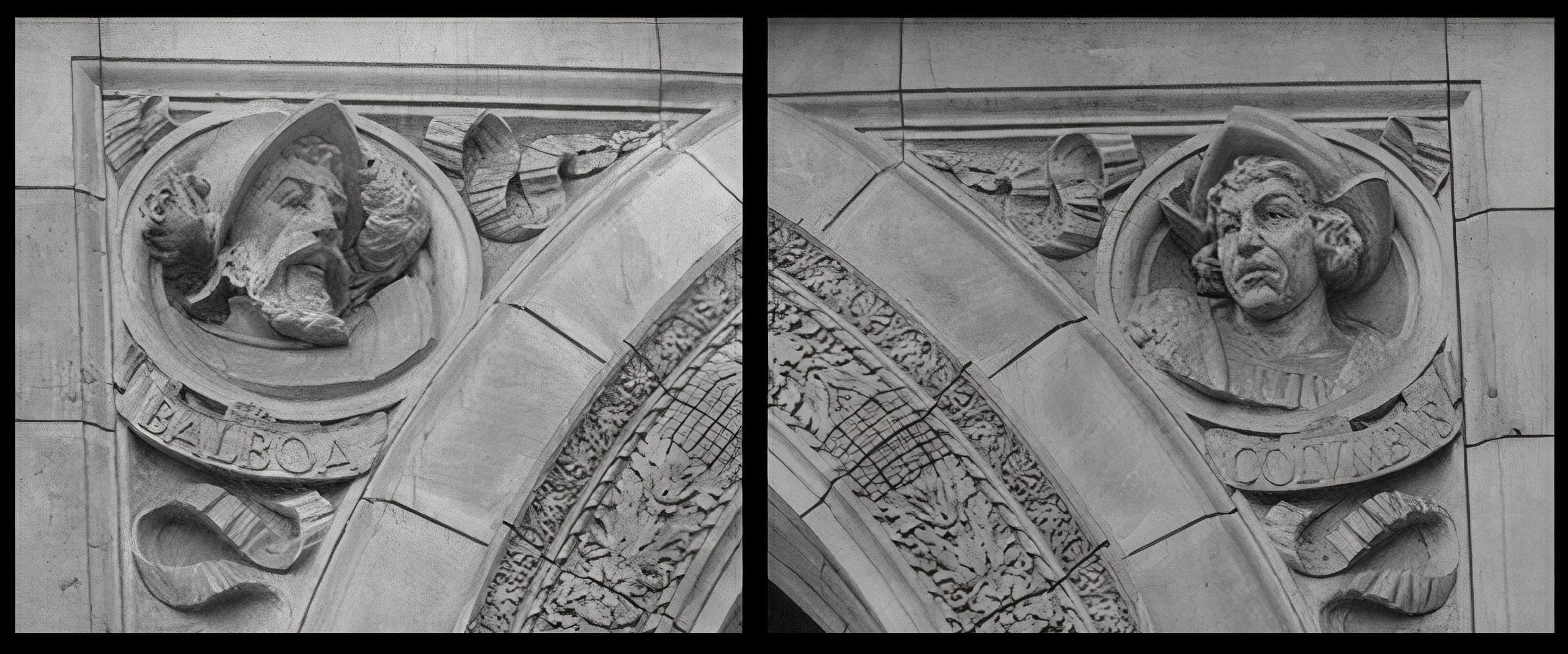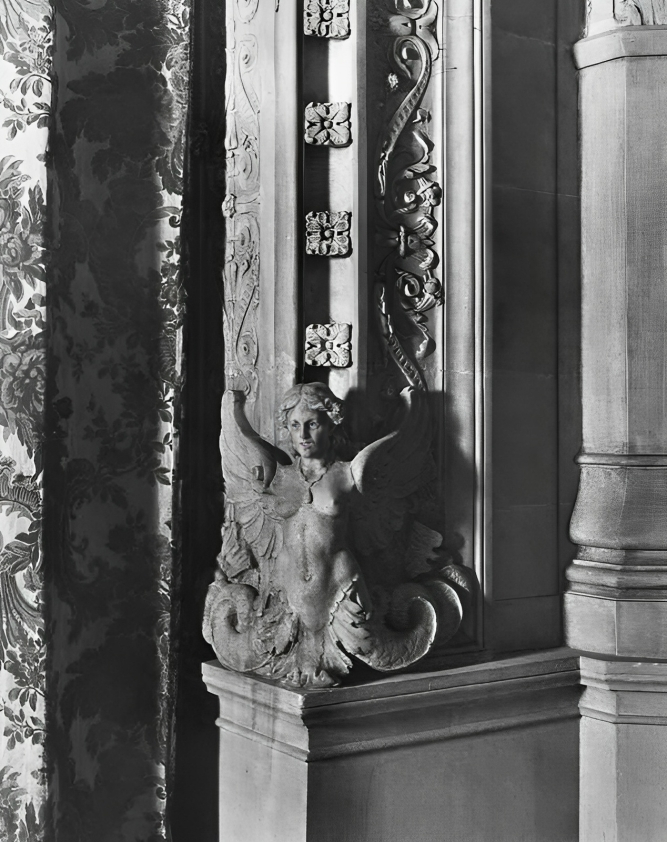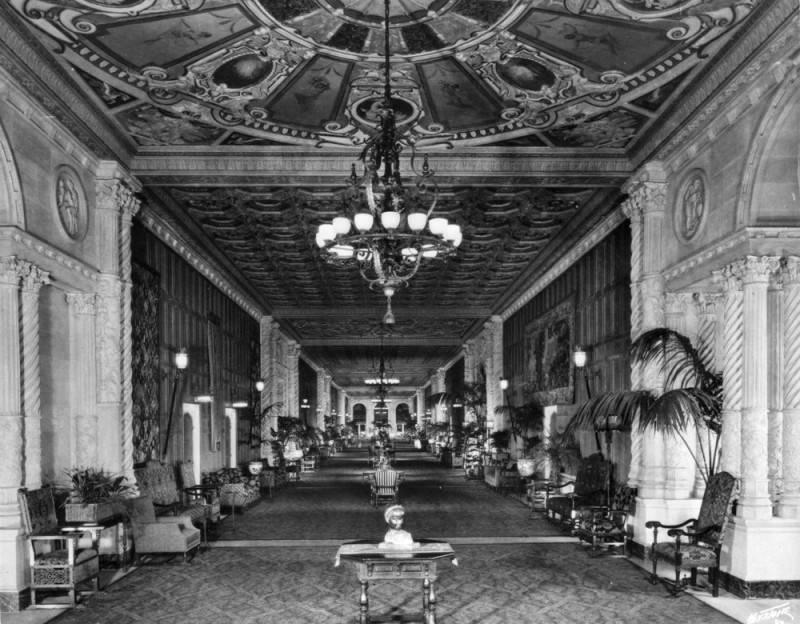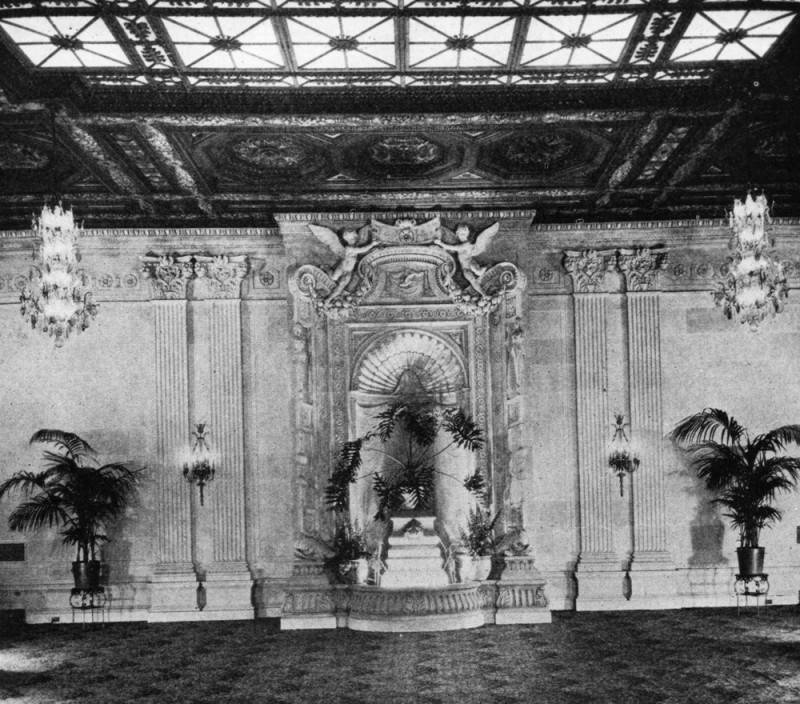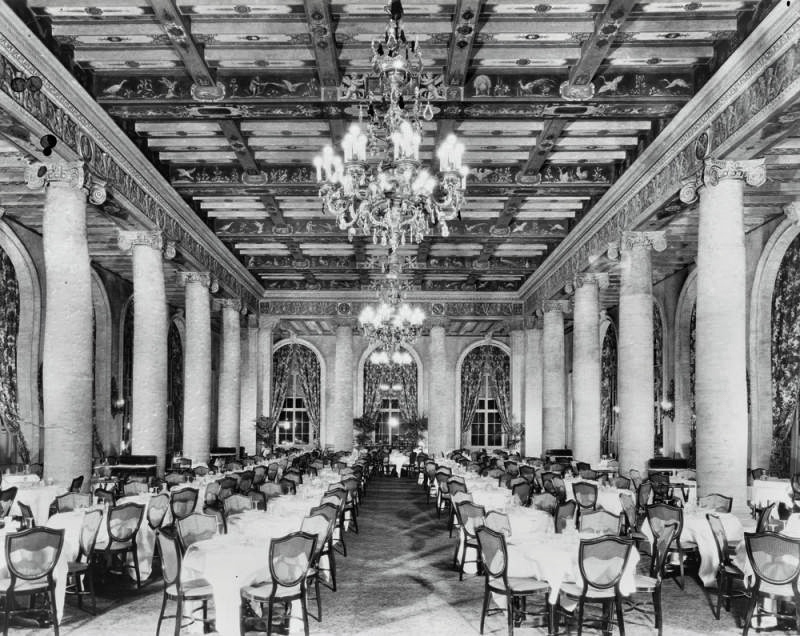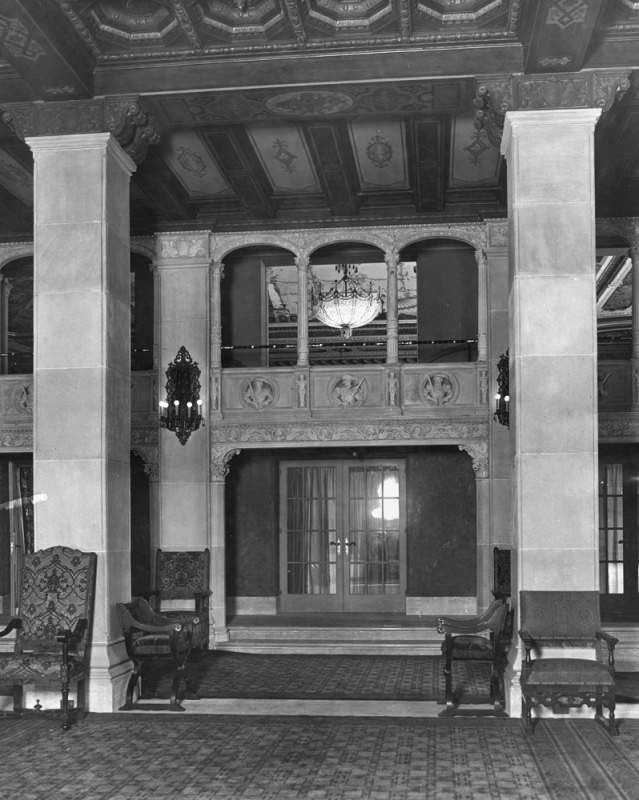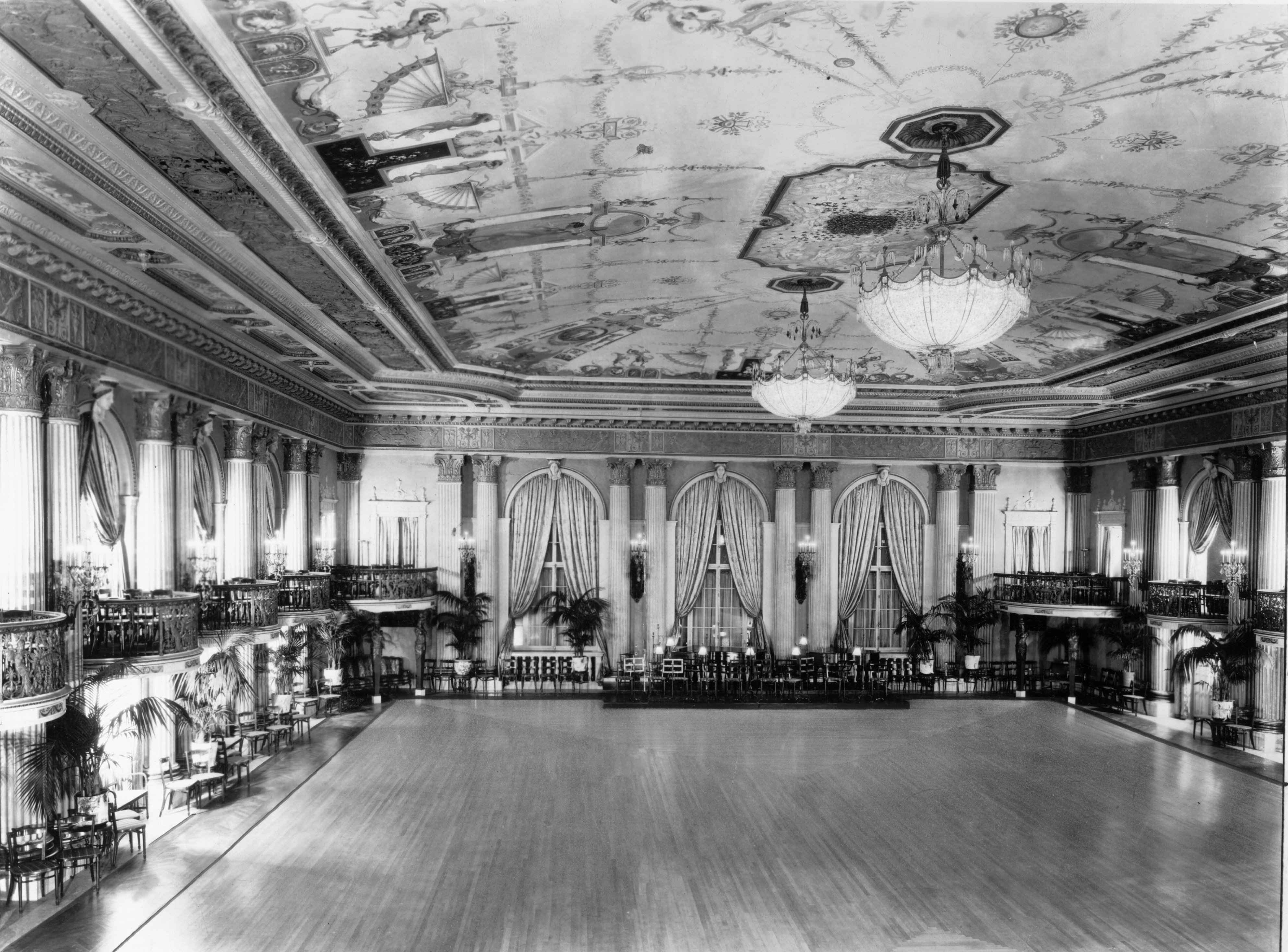1923 proved to be a banner year for construction in Los Angeles. While discounting structures like Angelus Temple, the Hollywoodland sign, and the Memorial Coliseum, the 1924 Los Angeles Times Midwinter reported that at least 34 commercial buildings had been erected around the city over the previous twelve months. Of these 34, only one had the distinction of exhaustive coverage in every local newspaper before it was even built: the Biltmore Hotel. The building sitting at Fifth and Olive for the past 100 years more than speaks for itself in terms of elegance, but the Biltmore is much more than a beautiful old building. This particular structure was symbolic of our city's maturation at a time when its future was uncertain. The Biltmore is emblematic of Los Angeles' civic ambitions and would prove consequential to L.A.'s municipal coming-of-age. The Biltmore was intended to help forge our city's destiny and would mark a turning point in our civic narrative, allowing L.A. to shed the remnants of our city's feral beginnings and advance ideations of Los Angeles as modern metropolis—as the Los Angeles Evening Express put it, "the Biltmore is another step of Los Angeles toward world greatness." Since it opened in 1923, the Biltmore has become hallowed ground and is engraved into the cultural, social, political, and economic bedrock of Los Angeles. This particular building represents the best of Los Angeles and has been a stronghold of civic achievement and refinement even when the area surrounding it hasn't measured up to that same standard. To honor this landmark building's centenary, let's look at how the hotel materialized, highlighting the days leading up to its opening on October 1, 1923, and how that week helped to change popular ideas about Los Angeles as a city.


Pershing is a Square

When tracing the history of the Biltmore, it is crucial to consider its location. In nineteenth-century Los Angeles, the rather humble park situated at Fifth Street between Olive and Hill had become the recreational hub for the community that developed outside the Plaza. As Los Angeles bid farewell to the nineteenth century, it wasn't entirely obvious that this parcel of land known as Central Park was destined to become a social epicenter. The park was a rather unremarkable collection of trees, bushes, grass, and pathways surrounding a bandstand that provided a minor reprieve from the day. All of this changed, however, when, in 1910, Los Angeles' premiere architect, John Parkinson, worked his magic, transforming Central Park into the most beautiful public space in Los Angeles. Eight years later, Central Park was re-christened as Pershing Square, and while the beauty of John Parkinson's design has been debased by a number of unfortunate changes throughout the decades, between 1910 and 1951, there was no denying that this was the most beautiful space in Downtown. As a 1937 Times article put it: "It is a beautiful spot…the look of it, especially on a moonlit night, should inspire a poet, the palms and banana trees and the little fountain of imitation antiqued bronze are all etched against a leaden sky. Perhaps two lovers sit there on a bench holding hands, forgetful of all the world but themselves." More than simply being romantic, however, anyone with business to take care of while Downtown would eventually have to pass through it at some point, making it the most conspicuous space in the city, and civic leaders took note.
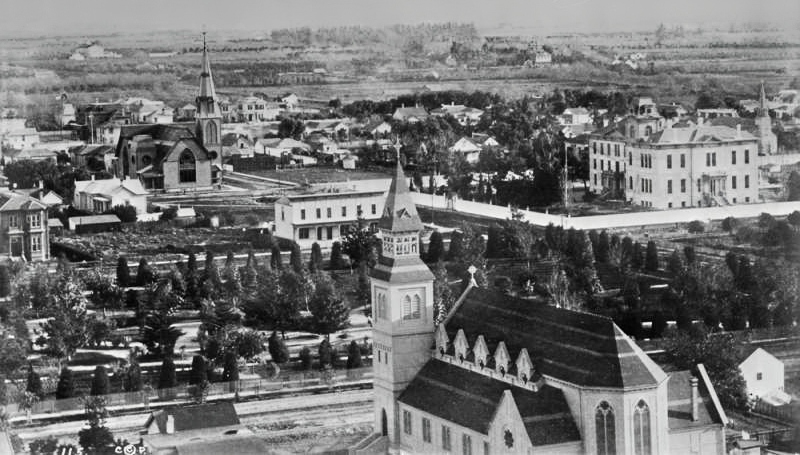
By 1914, the block where the Biltmore currently resides was cluttered with an array of two-story Victorian-era boarding houses, a church, and, on the southwestern corner of Olive and Fifth, lay an empty lot. Los Angeles Times writer Antony Anderson recounted living at one of the boarding houses when he first arrived in 1904:
"The hotel (I forget its name) was small and narrow, perhaps two or three stories in height, dingy for lack of paint…I remained there for some weeks in a room overlooking the garden of St. Paul's Cathedral, where the choir boys marched, singing on Sunday mornings. Central Park, somewhat unkempt but pleasantly umbrageous, was directly opposite the little hotel, and a wizened Chinaman had his laundry in a tumbledown shack where the huge building of Pacific Life Insurance Company now rests on the soil so heavily that it groans with immense burden."
The 1920s was a transitional period in Los Angeles history when the final vestiges of the Victorian residential community surrounding Pershing Square were peeled away. While today we decry the loss of our Victorian-era architecture, by 1920, anything Victorian was seen as hopelessly dated, ugly, and decidedly not part of a modern civic vision. John Parkinson had created the ideal 'modern' civic centerpiece, and city oligarchs were determined to surround this oasis with sophisticated, modern buildings that would not only raise our civic profile but project their aspirations for our city. The block just west of Pershing Square was, most decidedly, not meeting anyone's objectives.
Central Investment Corporation
The genesis of the Biltmore can be traced to a March 1921 meeting of civic leaders organized by Joseph Sartori, President of the Security Trust and Savings Bank. The meeting consisted of at least 40 prominent civic "leaders"—among them Harry Chandler of the Los Angeles Times, department store owner Arthur Letts, real estate mogul William May Garland, film director Cecil B. DeMille and others; the meeting was centered on furthering civic development, to, as the Los Angeles Times put it, "consider the construction of a modern hotel, commensurate in size, luxury, and appointments with the size of the city." The group was particularly interested in the area surrounding Pershing Square, and the Times reported that "with a single exception, all agreed that an effort should be made to consolidate the various holdings at the southwest corner of Fifth and Olive Streets." Before the end of the year, this group had formally organized as the Central Investment Corporation (CIC): "It is proposed to organize a corporation as above indicated for the purpose of building a fire-proof hotel of one thousand rooms at the southwest corner of Fifth and Olive Streets, having a frontage of three hundred and sixty feet on Pershing Square." The CIC eventually secured the land for a reported 1.4 Million and, much to everyone's surprise, were also able to raise enough capital to interest hotelier John McEntee Bowman, the Toronto-born President of Bowman-Biltmore Hotels.
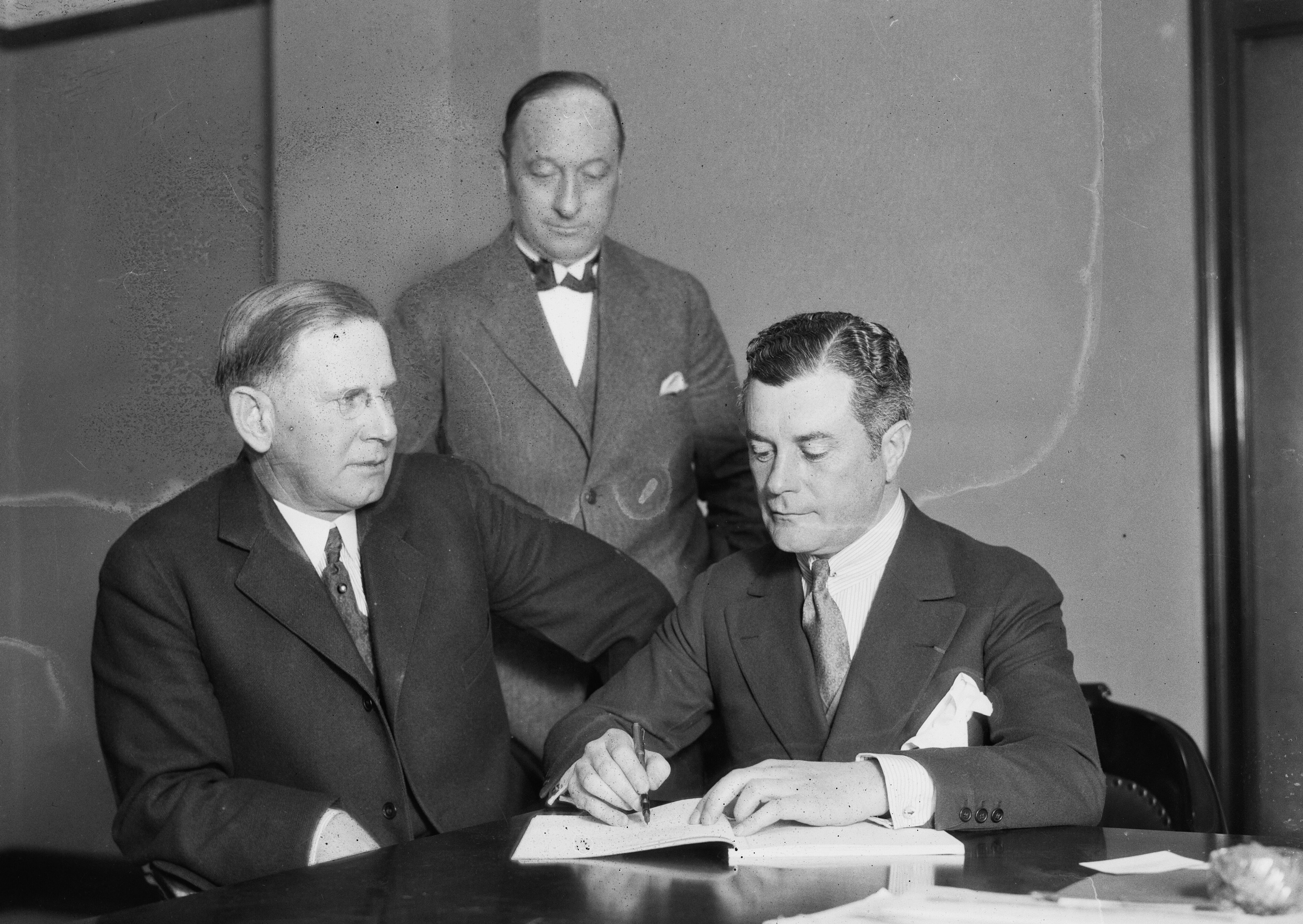
Following the completion of the Biltmore, Lee A. Philips, the President of the Central Investment Corporation, wrote an article for the Los Angeles Evening Express that documented the history of the Central Investment Corporation and implied that the Biltmore was the result of Los Angeles' "recognized need for larger, better L.A. hotel" as "travelers arriving were constantly confronted with [a] shortage of first-class accommodations and the entertainment of large gatherings and conventions has been difficult." But that assertion wasn't quite accurate. By 1923, Los Angeles had a number of large hotels like the Ambassador, the Alexandria, the Lankershim, the Rosslyn, The Baltimore, and, just one year later, the infamous Cecil Hotel would be added to the civic roster, so what is Philips talking about here? Besides the obvious removal of an eyesore Victorian past that was so offensive to the new Beaux-Arts grandeur, the Biltmore was an investment in the future. In reality, the Biltmore had little to do with adding accommodations to a city that just three years ago had a little over half a million people living within its boundaries and more to do with the future direction of that city. From 1920 to 1930, a very calculated onslaught of booster material beckoned Americans to Los Angeles, while the holy trinity of oil, motion picture production, and manufacturing would contribute to doubling the city's population by 1924. It was a concerted enterprise that worked a little too well when the Great Depression hit, and disenfranchised, jobless people kept trickling into L.A. hoping to find salvation. The Biltmore wasn't realized to accommodate migrants desperate for work, it was intended to impress discriminating tastes who weren't quite sure about what Los Angeles had to offer. But in 1923, the Biltmore would be the crowning achievement among a number of civic monuments that are still revered.

Bowman, Schultze & Weaver
John McEntee Bowman began acquiring hotels in 1913, eventually establishing a recognized brand with his Biltmore hotel chain. He would continue to acquire established hotels, redevelop sprawling estates as resorts, and work with architects to construct a number of hotels from the ground up. In 1923, Bowman wrote an article in the Architectural Forum in which he expressed what he believed the role of the architect in creating a hotel, "the basic functions of the hotel are to provide comfortable shelter, good food, and atmosphere. Any well-constructed building will provide adequate shelter; good management bears the responsibility of food and service; but, for atmosphere, that intangible contribution to the well-being and the satisfaction of hotel guests, we must look primarily to the architect." Initially reluctant to bring his Biltmore brand to Los Angeles, Bowman would capitulate to a long-term lease when the CIC agreed to hire the architectural firm of Schultze & Weaver to design the hotel.
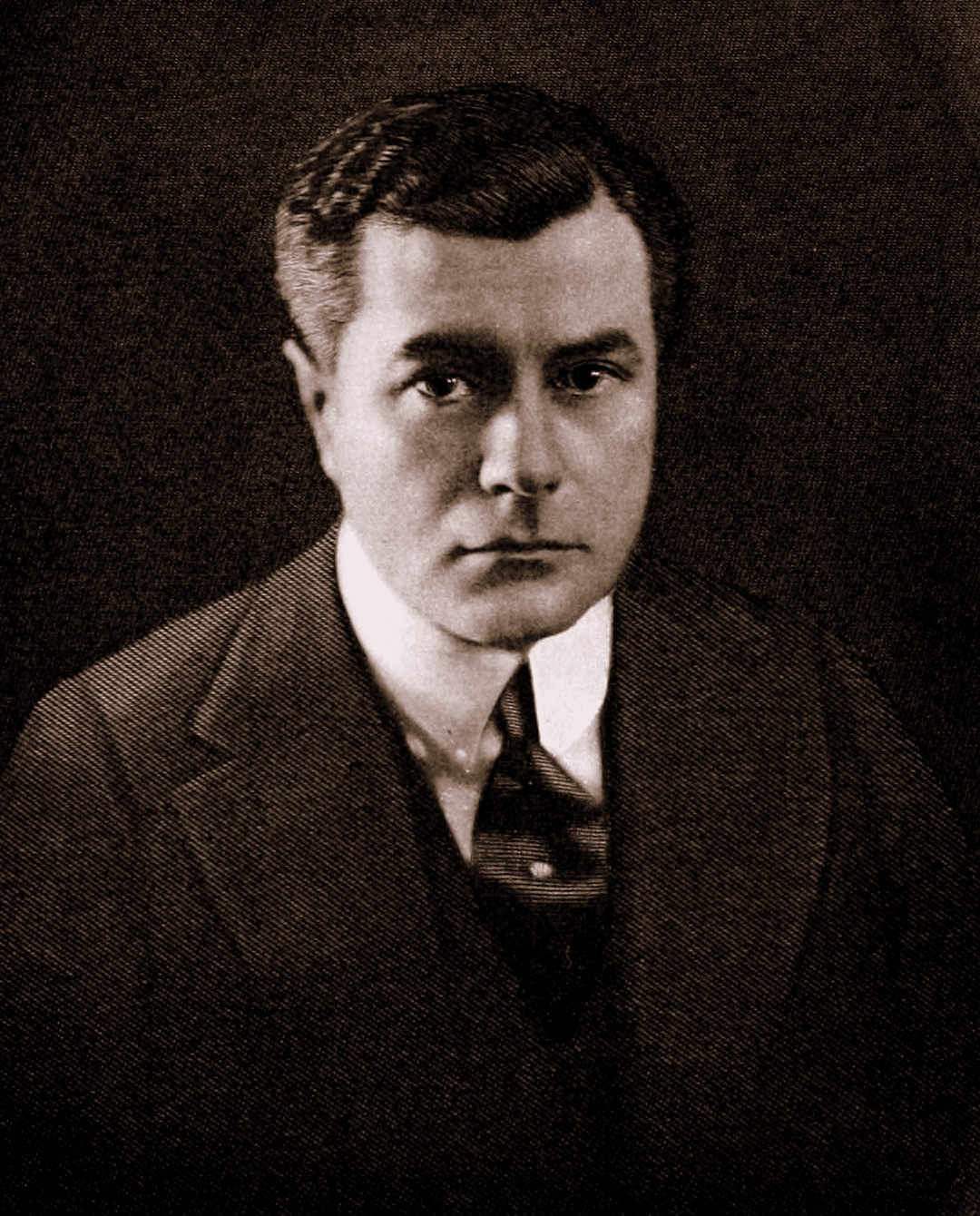
Bowman depended upon architects who were familiar with his tastes to create something in line with the Biltmore brand. One architect in particular seems to have had a direct line to Bowman's imagination: Leonard Schultze. Originally from Chicago, Schultze relocated to New York, where he attended the City College of New York and ultimately found himself under the tutelage of Emmanuel Louis Masqueray, a master of the Beaux-Arts style. After serving in the Spanish-American War, he joined the firm of Warren and Wetmore, where he remained for nearly two decades and was involved with a number of high-profile projects, including Grand Central Terminal and The New York Biltmore, the latter project propelling Schultze into the orbit of John McEntee Bowman. In 1921, Schultze left Warren & Wetmore to head his own firm with Spencer Fullerton Weaver.
Leonard Schultze's partner, S. Fullerton Weaver, was born in Philadelphia on December 22, 1879. As the Great Grand-nephew of President James Buchannan, he classed in the upper echelons of society. Weaver graduated from the University of Pennsylvania in 1902 with a degree in civil engineering before WWI took him to France, where he served in the 77th Division of the 306th Infantry. During that conflict, he earned the title he would be addressed by for the rest of his life, "Major Weaver." Weaver had a number of significant real estate holdings throughout New York City and was on the Board of Governors for the New York Real Estate Board. He was also a member of a number of exclusive social clubs, including the Society of Mayflower Descendants and (much later) the Jonathan Club. It's not entirely clear how Weaver and Schultze first met, but as Schultze's reputation as an architect grew, he began to circulate within New York society, placing him on a collision course with Weaver and resulting in their eponymous architectural firm, Schultze & Weaver. While Weaver's name has been connected to the Biltmore based upon his firm's involvement, it's unclear how much "hands-on" work he had with the project. In Margaret Leslie Davis' book The Los Angeles Biltmore: Host of the Coast , she states that Weaver served as the "artistic genius" of the overall plan, but she does not elaborate. Newspaper reports from the time indicated that Schultze regularly returned to Los Angeles to survey progress, but it's difficult to find any mention of Weaver in Los Angeles prior to arriving a week before the October 1 opening.
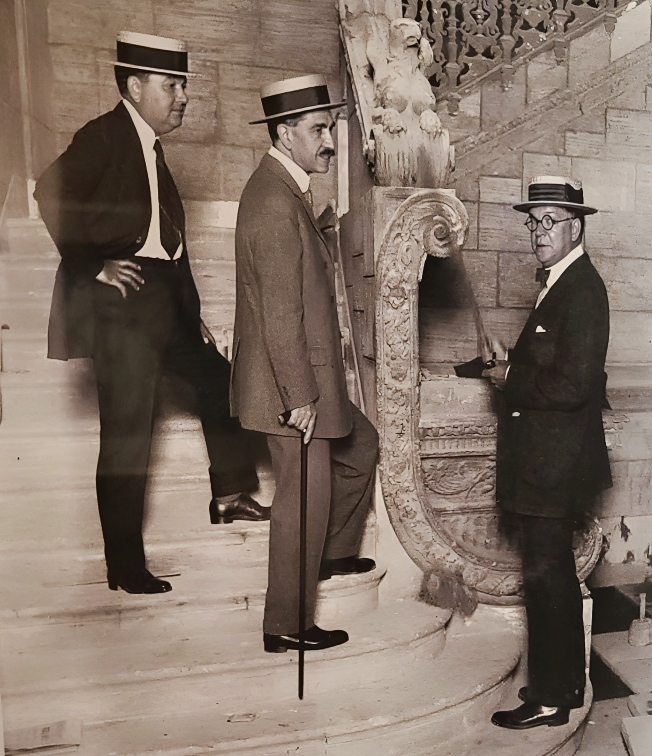
The rapport Schultze had cultivated with Bowman while working on the New York Biltmore likely factored into Bowman's stipulation that Schultze & Weaver take the reins when designing a new Biltmore Hotel in Los Angeles. Some may interpret this as cronyism, but by 1921, both Schultze & Weaver had established themselves within their profession, and the Biltmore more than speaks for itself. The Biltmore would not, however, prove to be the pair's only commission in Los Angeles, where they were also responsible for The Jonathan Club Building and the Subway Terminal Building, both of which are (thankfully) still standing. Schultze & Weaver's commissions outside of Los Angeles are much more diverse in appearance than their Los Angeles projects, suggesting that the Biltmore set a standard in L.A. that others wanted to replicate.
Planning & Construction
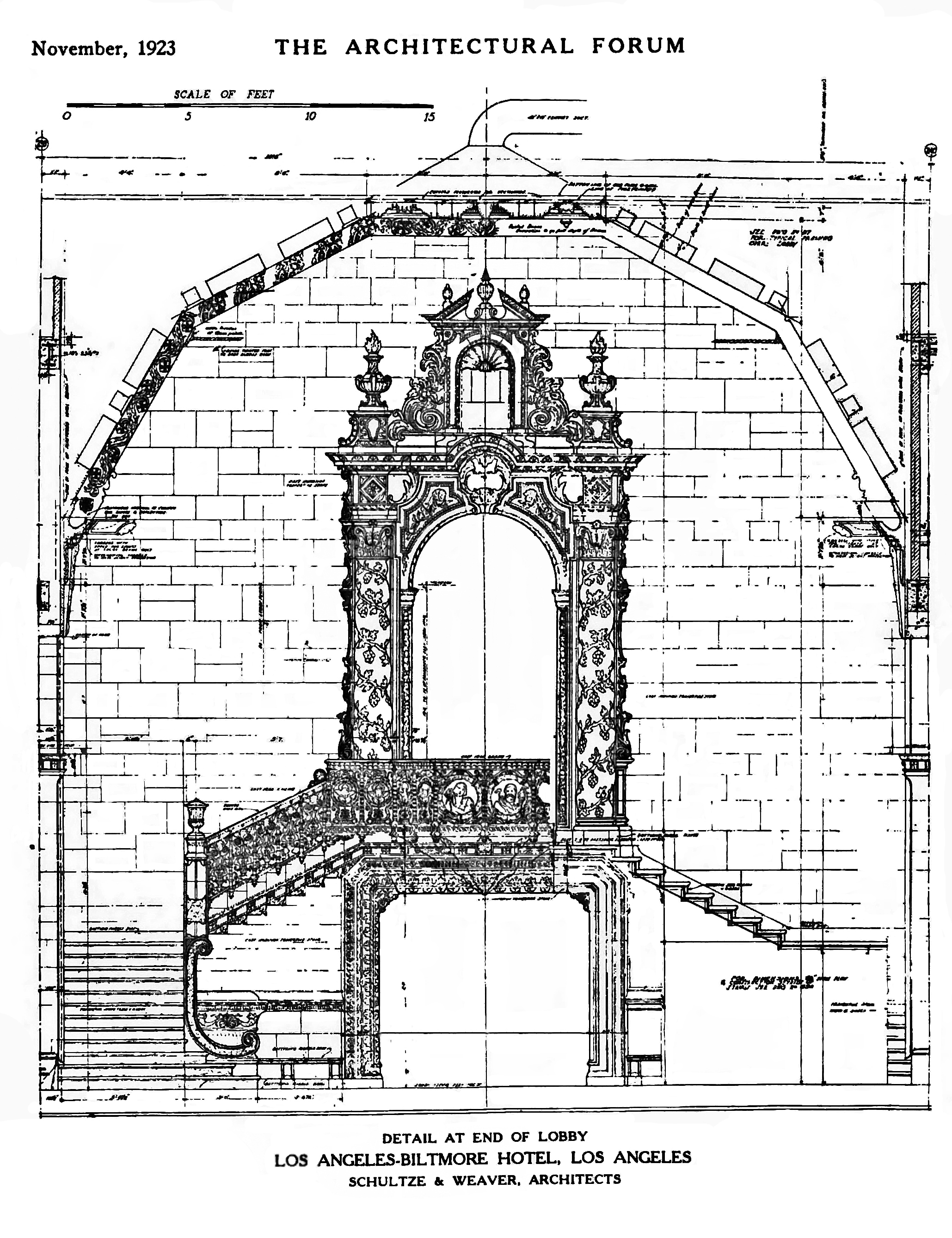
Leonard Schultze penned an article for the November 1923 issue of The Architectural Forum entitled, "The Architecture of the Modern Hotel," and, while it does not specifically mention the Biltmore, it was Schultze & Weaver's only completed project at that point in time. The article provides insight into the level of planning Schultze felt was necessary. What he conveys is that no detail was too small to be considered, "The dimensions and proportions of the lot upon which the hotel is to be erected will govern, in part, the arrangement of the rooms so that the most economical use of it may be obtained. This will affect the character of the outline of the building and determine the general mass of the structure…" More importantly, Schultze was practical when it came to matters of finance, writing that "the architect must always bear in mind the ultimate cost of the structure." He explained that "If the appointments and decorations are too expensive and the volume of cubic contents too great, it is sure to prove a financial burden to its operators and ultimately be classed among the failures. There are numerous hotels in this country which have cost so much money that they cannot be made to bring in an adequate (if any) financial return to those who invested in the ventures." Cost was factored into planning, and one of the reasons the hotel was completed in such a short time and at a reasonable cost was that many of the ornate details were made from plaster rather than, for example, carved wood, marble, or stone. Plaster is not unusual in construction (particularly today), but given the profile of the project and the expectations placed on it, it is a curious choice, particularly when considering the ephemeral nature of plaster. That being said, it's oddly appropriate in a town known for film sets constructed with plaster, plywood, and imagination.
On February 11, 1922, The Los Angeles Evening Express reported that tenants living at the boarding houses on the prospective site were ordered to vacate the property by March 1 so it could be razed. One day later, the Express reported that Schultze was due to arrive in Los Angeles with one of the principal backers, Lee A. Phillips, Vice President of the Pacific Mutual Life Insurance Company, to survey the site. By February 23, details of the project were published in the newspapers:
"Plans for the palatial hotel, as prepared by the New York Architects Schultze & Weaver, call for a 14-story building with a frontage of 320 feet on Olive Street and 194 feet on Fifth Street. The Biltmore, as now planned, will contain nearly 950 guest rooms…the huge structure will be a class-A building with a frame of steel and reinforced concrete. The exterior walls are to be constructed with brick, finished in terra cotta tile. The main entrance to the Biltmore is to be on Olive Street. One feature of this entrance will be a private automobile driveway leading from Olive Street directly to the south portals of the hotel. Every modern service, convenience, and arrangement that has been developed for the comfort and entertainment of guests has been included in the plans…"
On March 23, Scofield Engineering Construction signed their contracts, and 5 days later, excavation of the site was underway. The Examiner reported that on April 1, 1922, Llewellyn Iron Works of Los Angeles, the same company responsible for the ironwork in the Bradbury Building, had been awarded the contract to provide a reported 5,200 tons of steel that served as the frame of the hotel. One month later, the Times reported that Schultze had arrived in Los Angeles to make "preliminary studies for the class "A" hotel building to be erected at Fifth and Olive Streets by local capitalists and businessmen." By December, work on the steel frame was complete, and at the end of January, Bowman had returned with Schultze to Los Angeles to inspect the site. Bowman spoke to the Times, relaying that construction was moving at a record pace: "...from what I have learned. No hotel of like size was ever erected in such record time as the new Biltmore here in Los Angeles. I intend to make a thorough inspection of the structure and probably announce tomorrow how soon we can open up. At present, I believe the opening day will be October 1…" The Times described the building as 65% complete and explained that bedroom furniture had been ordered from Grand Rapids, but it was expected that lobby furniture would be made here in Los Angeles. Construction continued into the spring and summer months, and an occasional reminder was shoehorned into the local newspapers to make sure no one forgot that the most magnificent building in Los Angeles was coming. An April 16 story in the Times quoted Bowman who insisted there would be a chapel "for the use of its guests for prayer and meditation" while the June 7 edition of the Los Angeles Record reminded readers that the Biltmore was slated to be finished in October and suggested that "if you are thinking of dinner there on the opening night, now is the time to begin finding a place to park your car." From start to finish, the project reportedly took eighteen months to complete.
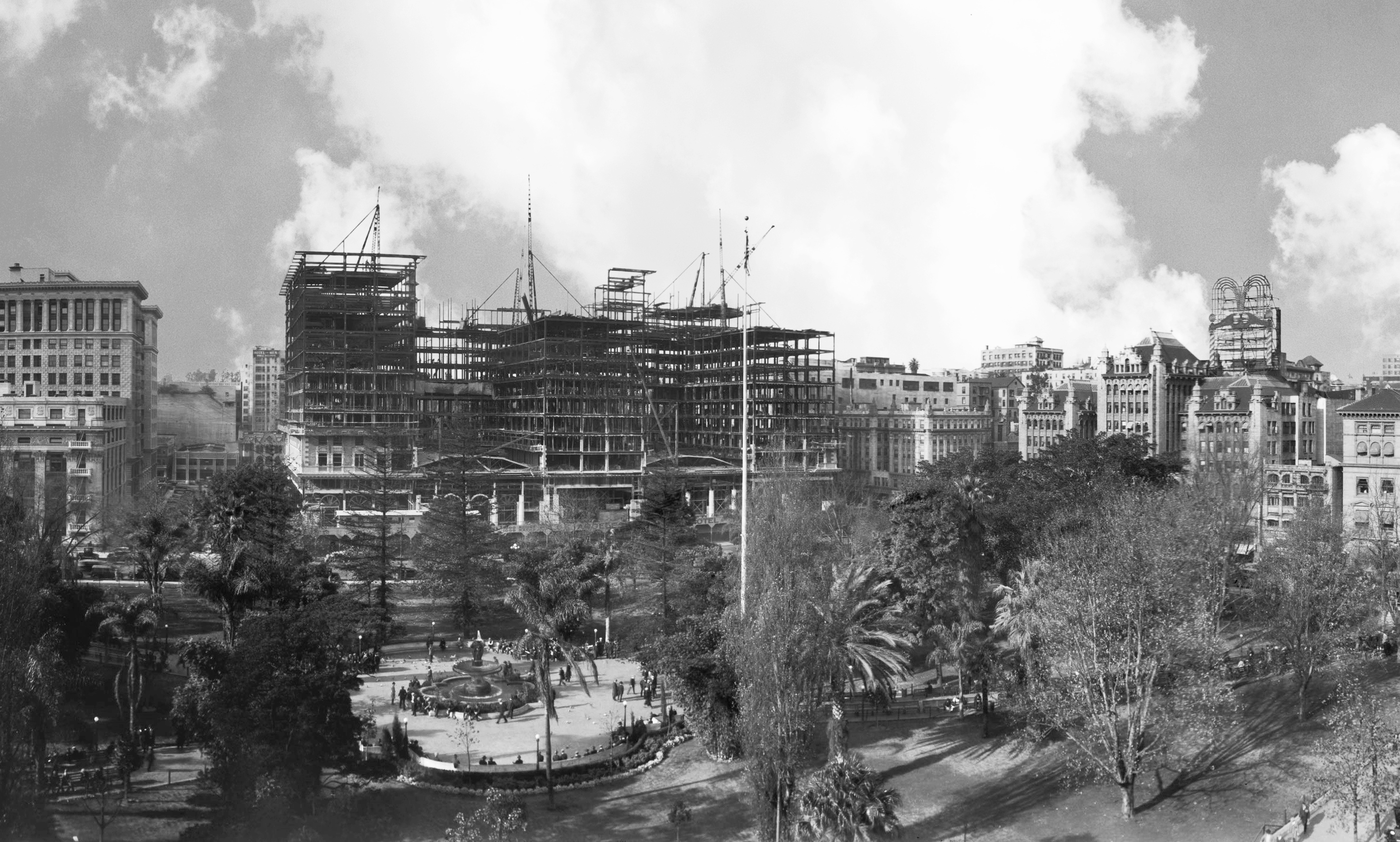

The $150,000 Transcontinental Train De Luxe
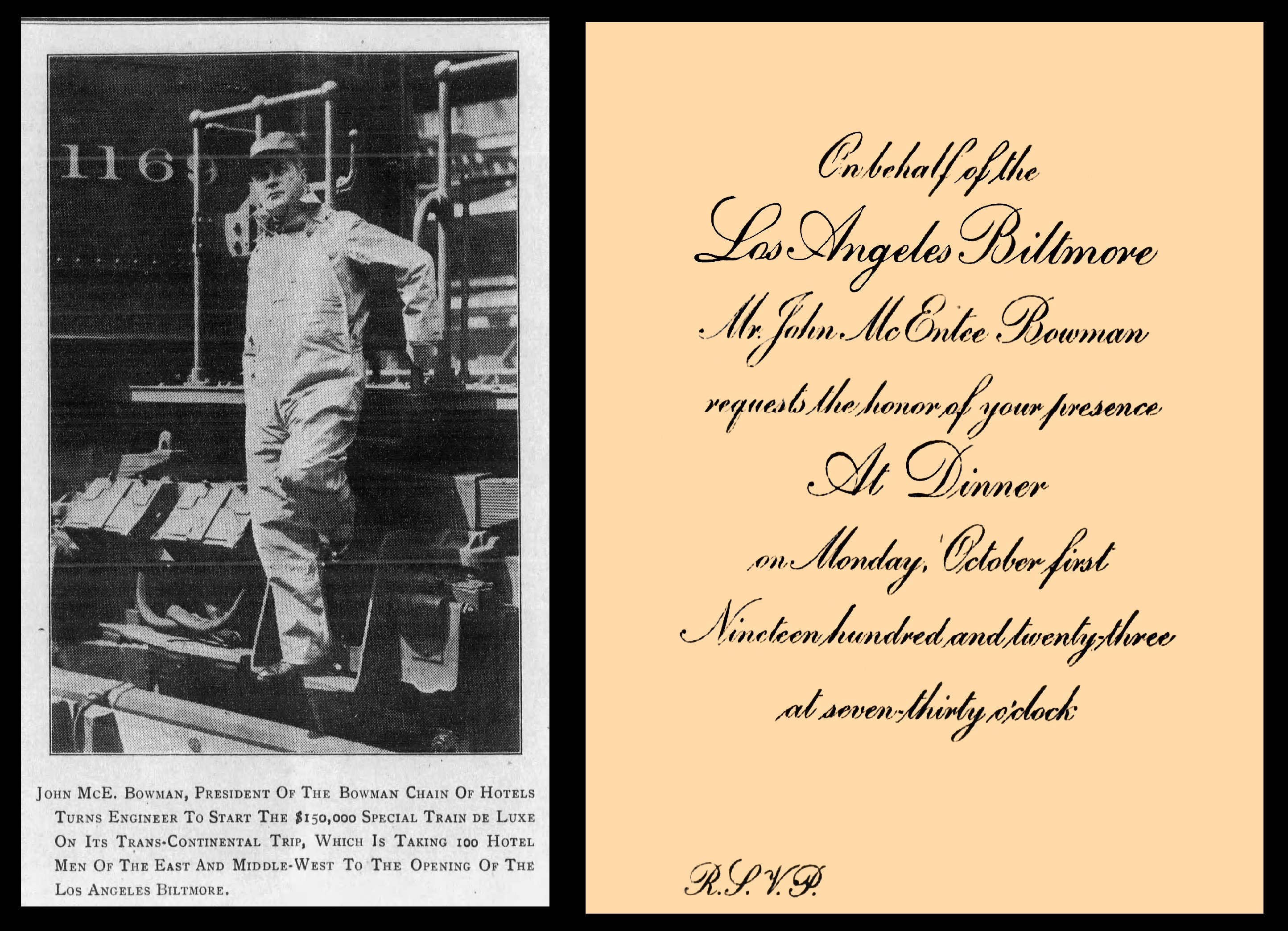
One of the more interesting footnotes in the Los Angeles Biltmore saga is a 10-day train trip organized by John McEntee Bowman. Bowman invited approximately 125 hoteliers and notable figures within the hospitality industry to join him on a cross-country train trip for the opening of the Biltmore. The Dunsmuir News reported that "The Bowman-Woods Biltmore Special De Luxe train, transporting more than 100 hotel leaders, their wives and families on their way to Los Angeles to pay a generous tribute to two great figures in hoteldom [Bowman and V.P. James A. Woods]." The trip was part publicity stunt, part 'humble brag' and part wining-and-dining of hospitality industry bigwigs. The train was under the management of McCann's Tours and left New York on September 19 from New York to Los Angeles in the most roundabout way: making stops in Montreal, Vancouver, Seattle and San Francisco before reaching Los Angeles on the 29th. The party made brief stops along the way and local proprietors often bestowed gifts upon the passengers. In Seattle, it was reported that the proprietor of the Yakima Hotel, Bertha Johnson, bestowed the party with 17 boxes of apples, 17 boxes of grapes and 12 boxes of pears to prove that "Yakima [Washington] fruit is the finest in the world." Another stop in Dunsmuir [C.A.] reported that a number of local hotel proprietors boarded the train to present "their welcome in the name of hotel fraternity." Those on the train were present for the entirety of the festivities in Los Angeles including a special dinner on October 4 given in honor of James A Woods, Vice President of Bowman hotels. The group stayed at the Biltmore until October 5 when the return trip left L.A. passed through Denver, Kansas City and Chicago before returning to New York.
"A Monument to Civic Support"
The Biltmore of 1923 was slightly different from the building that exists today. Renovations, additions and minor changes have altered the original layout while some amenities have been updated or removed entirely but the overall style, and inherent character of the 1923 building remains intact. Bowman's Biltmore brand distinguished itself with stately exteriors and a richly stylized interior and the Los Angeles location was no exception. The facade of the building is a solid, infallible fusion of brick, stone, brass and copper that, more than any building surrounding Pershing Square, commands attention. Schultze explained that "...the successful hotel, insofar as its exterior is concerned, can be nothing more than a true expression of the various elements of the plan and the component parts of the building that go to make up that plan." This particular project, however, seemed to belie the rather majestic elements that comprised the interior and, instead, project an edifice of refined solemnity.
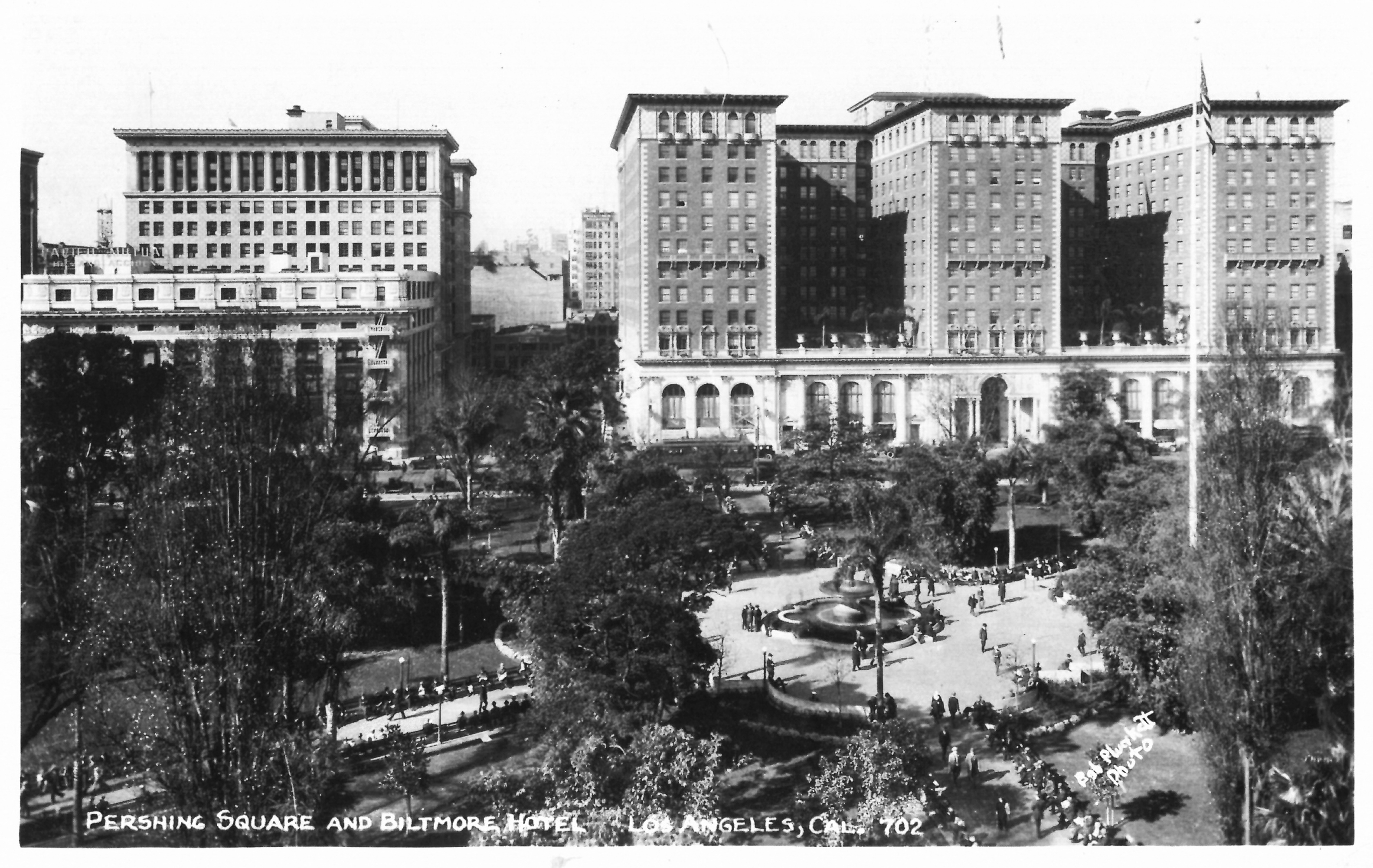
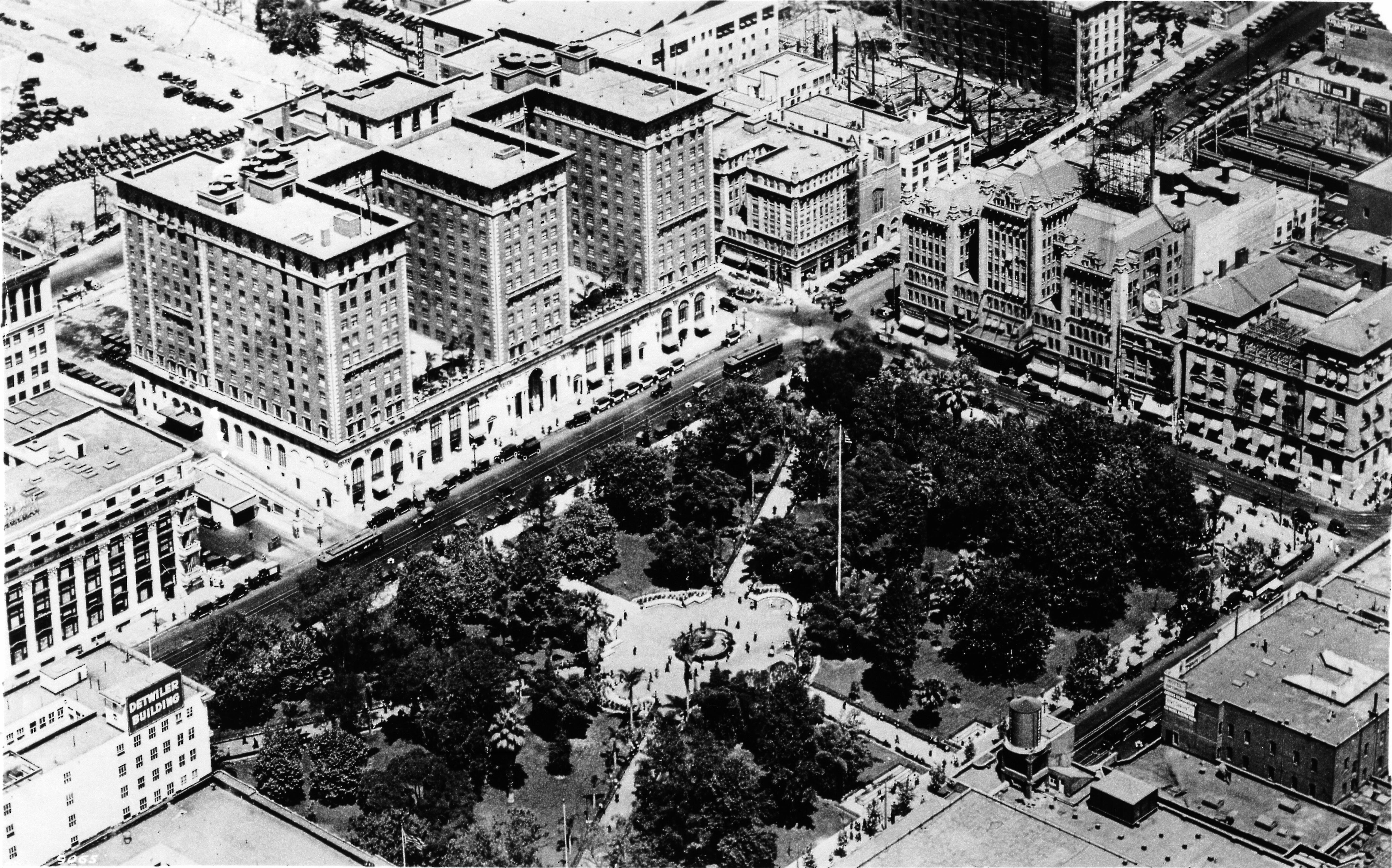


In keeping with the idea that Pershing Square would usher pedestrian traffic into the building, the Olive St. level was considered the "ground floor" while the side closer to Grand Ave. was identified as the "First Mezzanine." The original lobby (now called the Rendezvous Court) is heavily influenced by Moorish Spain and Italian Renaissance architecture with beige travertine stone walls capped by hand-carved beams sitting more than three stories high. Both the ceiling and beams have hand-painted adornments that include 24-karat gold accents. The bronze staircase at the western end of the room leads to an elaborate altar-like archway that flows into the Galeria Real. The top of the staircase is girded by bronze reliefs of the Roman goddess Ceres (left) and Spanish Conquistador Vasco Nunez de Balboa (right). Antony Anderson of the Times described it as "modeled after a fine old room in a Spanish castle, the influence decidedly Moorish." "Spanish" motifs can, in fact, be found throughout the hotel including reliefs featuring Queen Isabella, Christopher Columbus, and other "explorers" while coats of arms, described as 'Spanish' in promotional literature of the time, appear throughout the building. To the right of the original lobby was the "Men's Lounge," which was described as "a reproduction of the royal hall in which Queen Isabella first learned from the intrepid Christopher Columbus of the existence of America." An illuminated globe modeled after one allegedly created by Leonardo DaVinci dangled from the center of the room while the ceiling surrounding the globe was decorated with panels depicting Spanish conquistadors like Hernan Cortez and Vasco Nunez de Balboa. The entire interior was saturated in a rich Spanish Baroque style that remains captivating even to those who have seen it before.
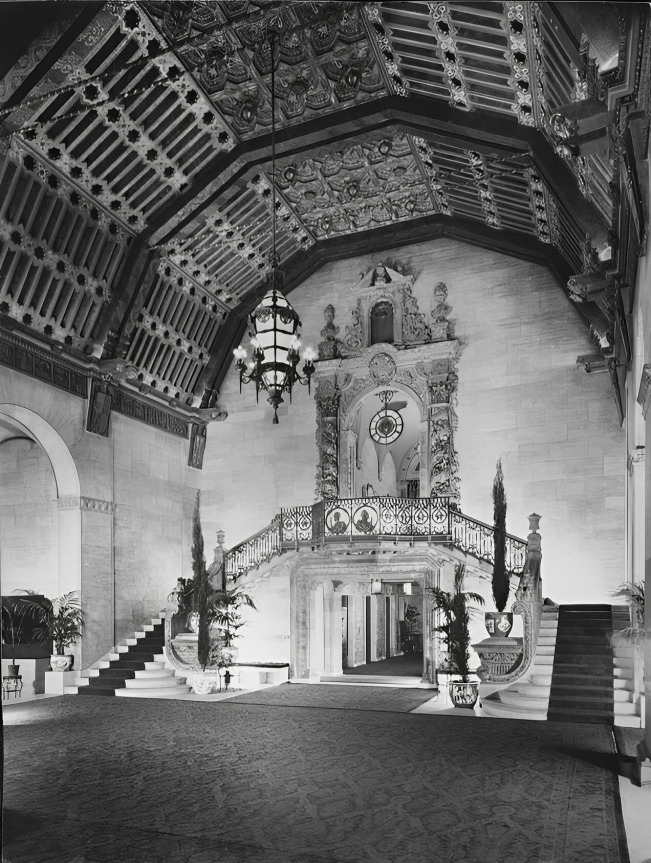
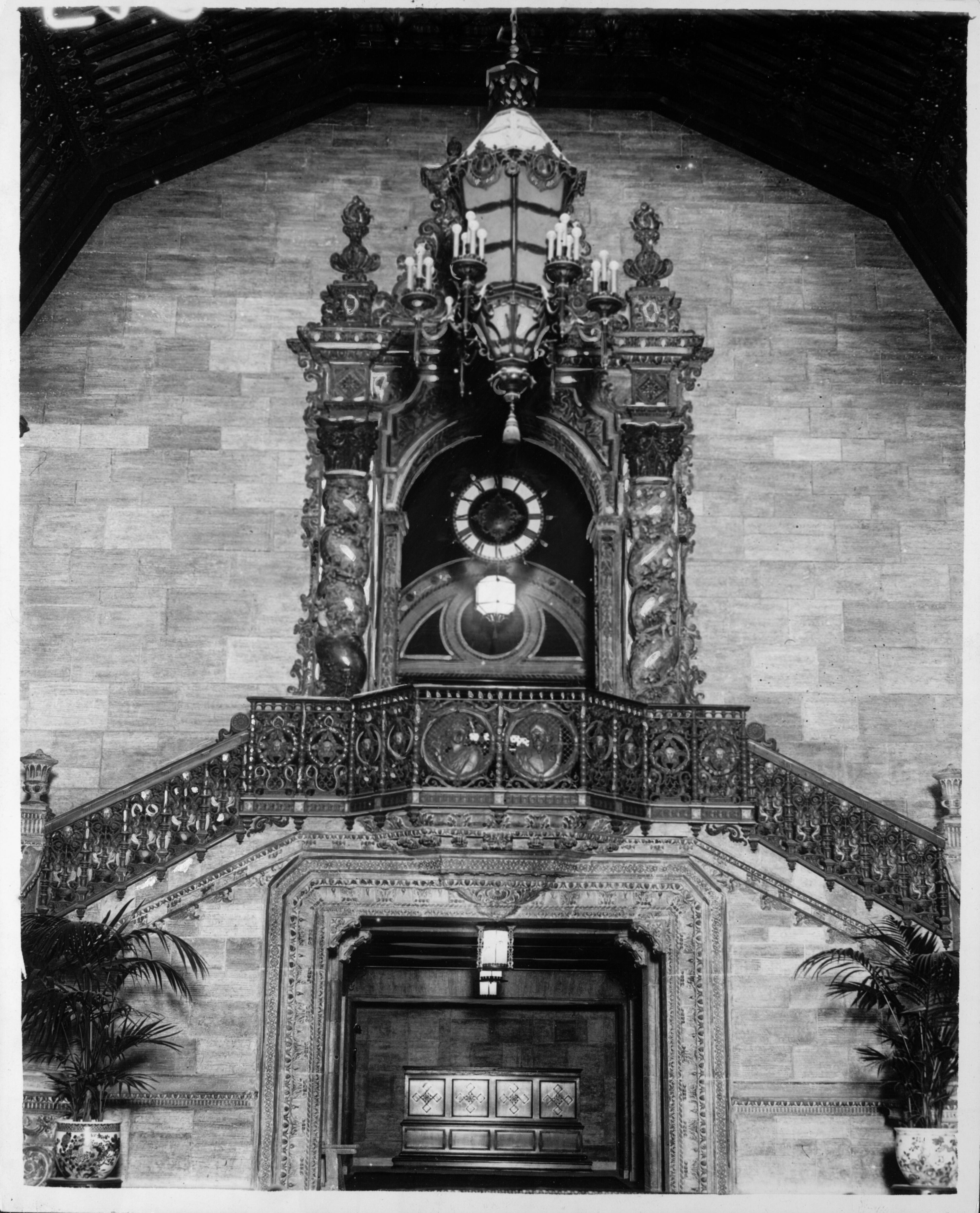
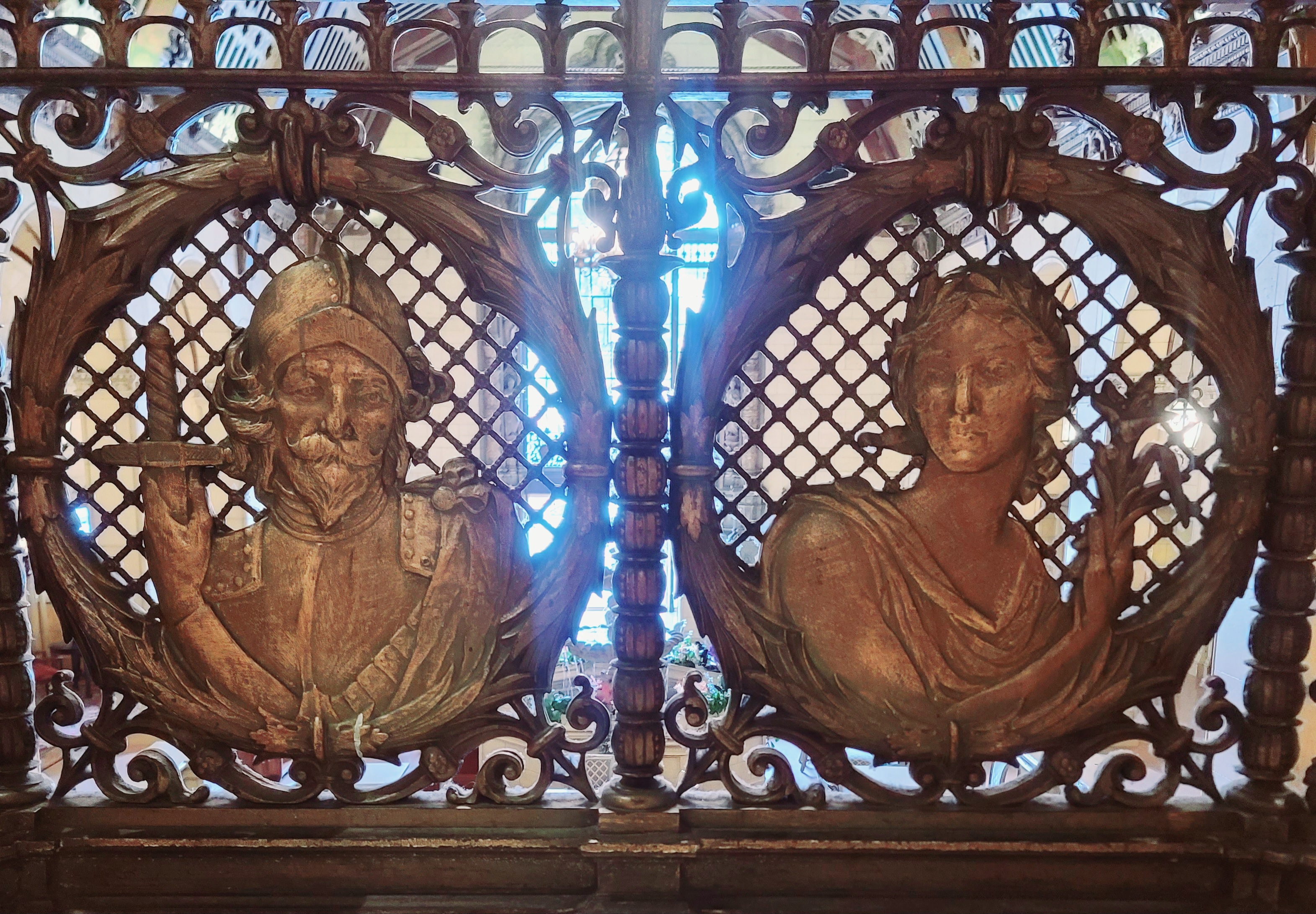
This "Spanish" element within the Biltmore's architecture may seem inconsequential but it plays into a facet of Los Angeles history: what writer Carey McWilliams characterized as a Spanish "fantasy heritage" that was rampant throughout Los Angeles during the first half of the twentieth century. During that time, civic leaders were deliberately shaping a narrative that connected Los Angeles to a Spanish (i.e. European) lineage while purposely distancing from both a Mexican and Native American one. Even fifty years later, the Spanish narrative was deeply embedded into Biltmore promotional material: "It had been decided by the Biltmore ownership to make the new Los Angeles hotel in an architecture harmonious with California's history and traditions and fully mindful of the Golden State's heritage of Castilian culture. Thus, the architecture was not the Spanish Colonial of Mexico and the Southwest but the Renaissance, which is in harmony with the background of the Conquistadores. It was the architecture of the rich and poetic land from whence the conquerors came." This fantasy heritage remains embedded in much of our city's narrative and while it doesn't impact the aesthetic integrity of the Biltmore, it should be recognized as a manifestation of a larger specter that haunts much of Southern California history.
A number of specialty rooms were situated on the first mezzanine floor including, at the northeast corner, the Dining Room, also referred to as the Renaissance room (now known as the Emerald Room) which has a 24-foot high hand-painted ceiling and could comfortably hold 350 guests. Sandwiched between the upper lobby and the dining room were the Palm Room and the Supper room; a contemporary renovation combined these two rooms to create the "Gold Room." Immediately across the Palm Room lay the Music Room, essentially a banquet hall where chamber music recitals could ideally be performed. The Music Room houses an ornate fountain along the western wall and has, overhead, a panel of opalescent glass that gives the illusion of a Louis Comfort Tiffany-style lamp when illuminated. The Times described the space as "just the place for solemn musik [sic]" adding that it was a space that "Lucca Della Robbia might have designed." In fact, the room was later referred to as the Lucca Della Robbia room in some publications. It was reported that four seventeenth-century Flemish tapestries were supposed to hang from walls in the music room but they had been delayed when they were involved in a train wreck; it was reported that one had been completely destroyed by muriatic acid that had spilled during the collision. Following renovations, the Music Room now serves as the lobby of the hotel. At the southeast corner of the First Mezzanine lay the Foyer to the Ballroom (now the Tiffany Room) which served as a primer before experiencing the splendor of the world-famous Ballroom (now known as the Crystal Ballroom).
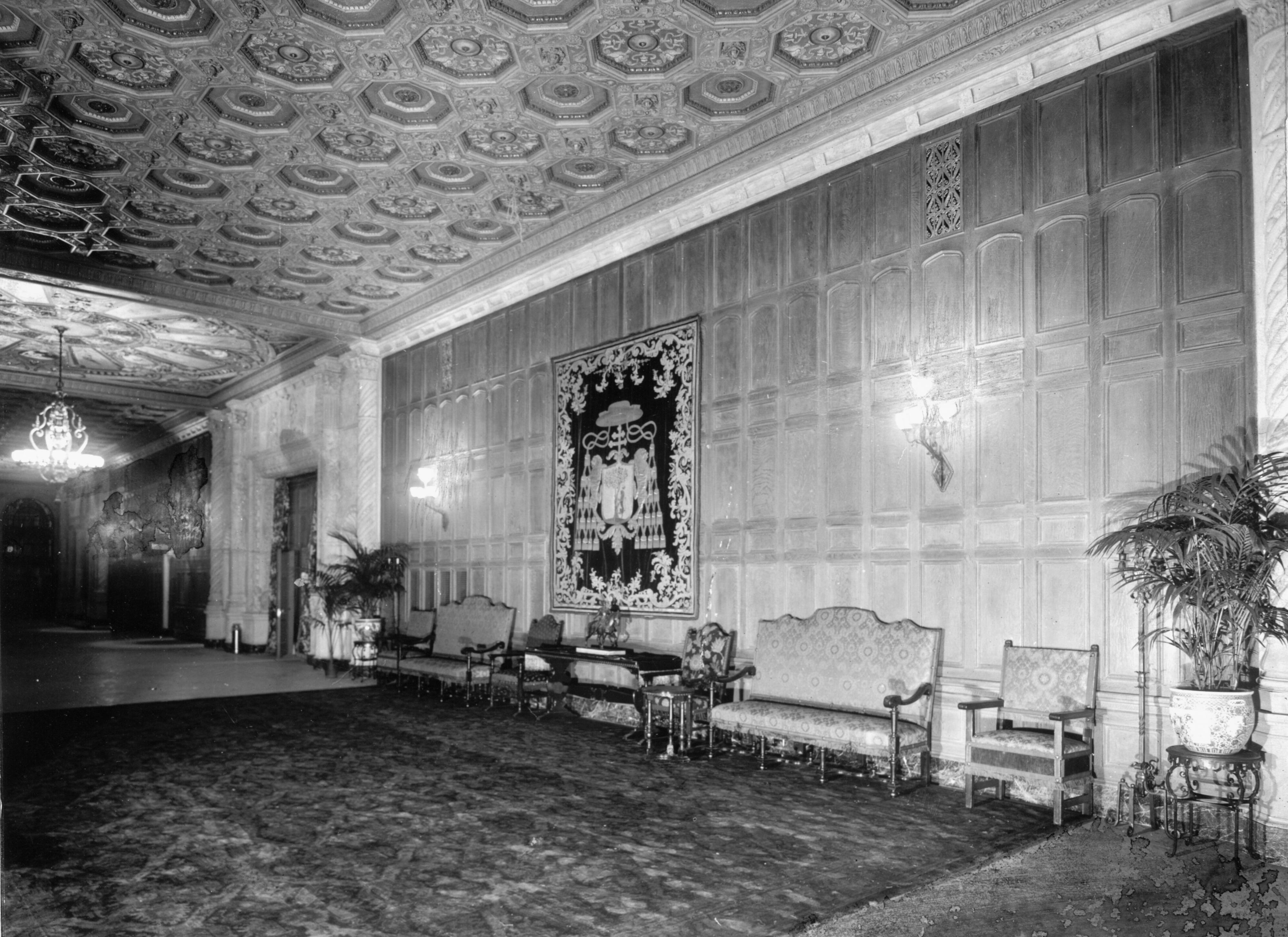

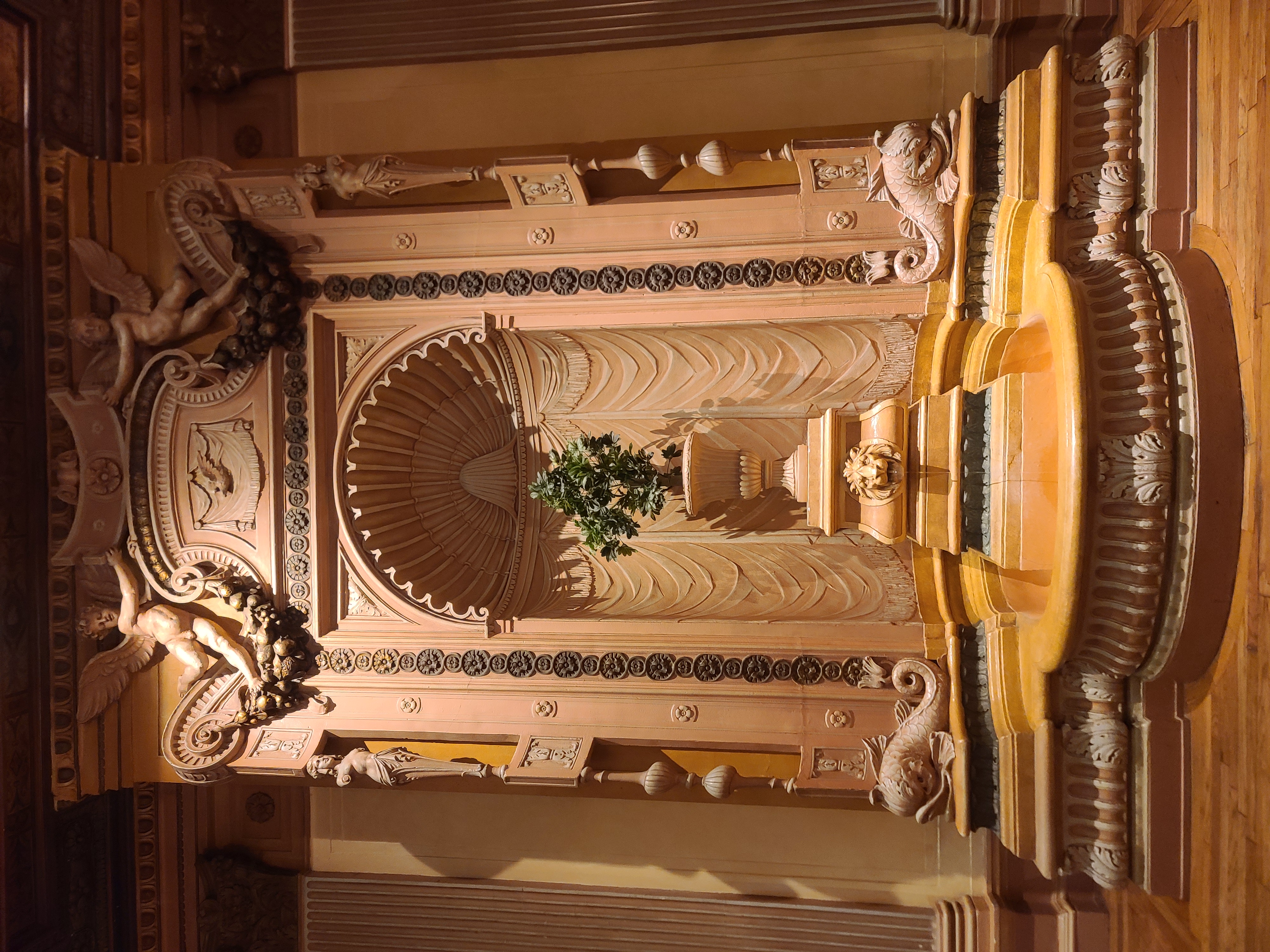
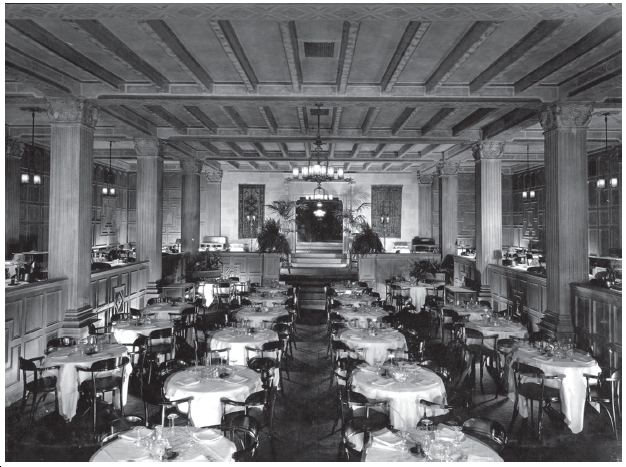
The Ballroom, described in a 1923 Times article, is "spacious ballroom with its foyer large enough to also be used for dancing has a specially designed and laid out floor of maple. The walls are of marble, stone, and plaster, hung with draperies. A gallery runs around the four sides." This practical, rather unsentimental description undermines one of the city's most beautiful interior spaces. The Ballroom is one of the few spaces that hasn't changed much since 1923 and remains as stunning as the day it debuted. At 6300 square feet and two stories high, the Ballroom is one of the largest spaces in the hotel and, arguably, the most extravagant. Nearly every corner of the room has some sort of adornment making it impossible to fully appreciate the artistry in a single visit. The original floor was constructed from maple but now appears to be covered by custom carpeting that has, no doubt, protected the original floors from decades of wear and tear. A series of second-story balconies establish a gallery along the periphery giving the feeling of a European opera house. Three oversized windows reside along the east wall of the hotel, overlooking Pershing Square; today, it's evident why the hotel would want to keep the curtains drawn but, in 1923 with a spectacular view of John Parkinson's urban oasis, guests would have reassured that Los Angeles was a cosmopolitan city. Intricate, gilded crown molding draws attention to the domed ceiling that supports two sparkling Austrian crystal chandeliers. Surrounding these chandeliers are masterful renaissance-styled artwork depicting an assortment of nymphs, satyrs, and cherubs that surround goddesses in diaphanous attire. Elaborate garland leads the eye to these focal points, highlighting this masterful artwork that resides on a single sheet of canvas. Times writer Antony Anderson wrote that the inspiration was the ceilings of "palaces in Florence." This particular masterpiece took seven months to complete and represents some of the finest work from an artist whose genius can be seen throughout some of Los Angeles' most venerated spaces.
Giovanni "John" Smeraldi
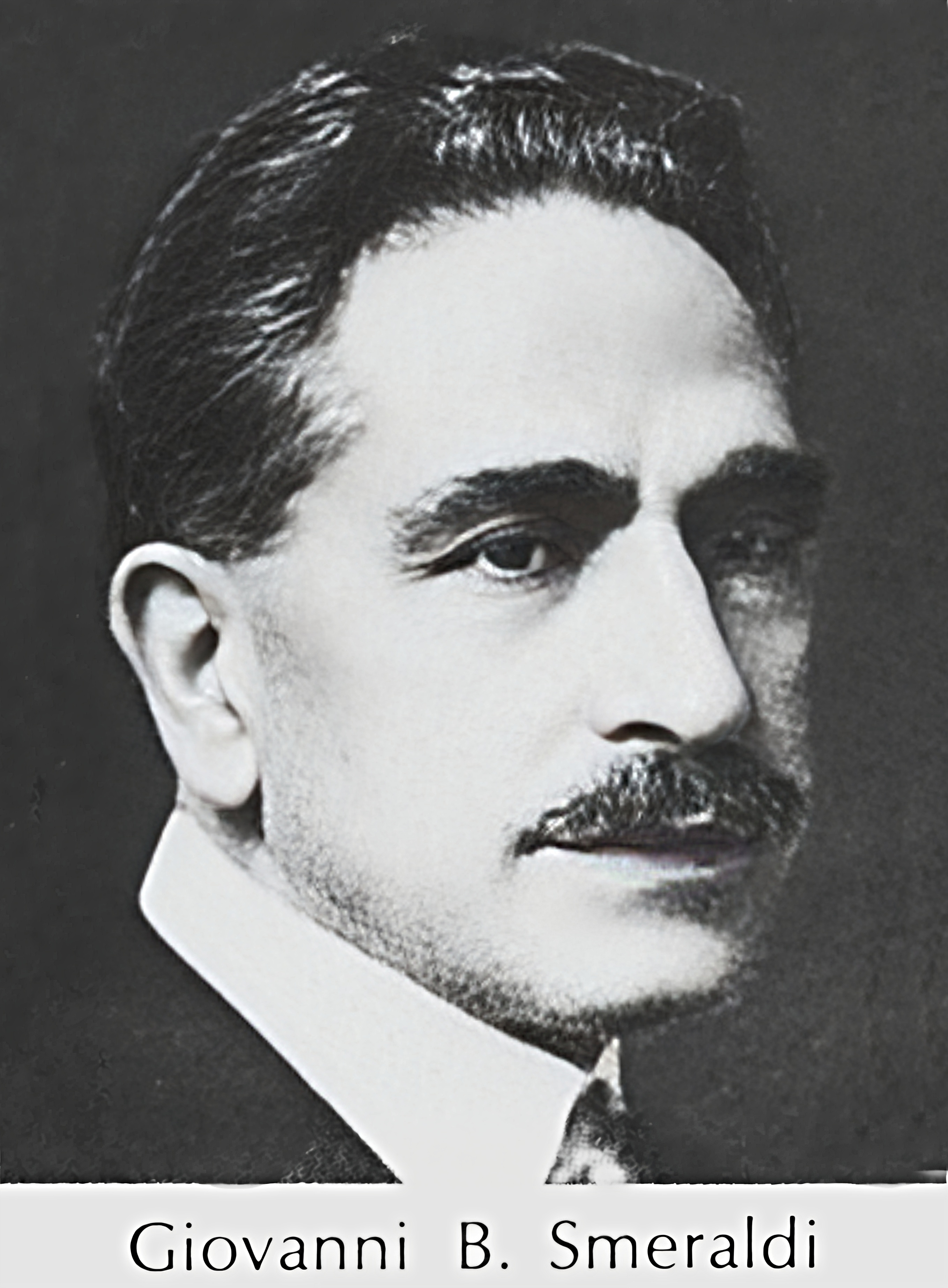
Artist Giovanni Battista "John" Smeraldi is, perhaps, the most important name tied to the aesthetic history of the Biltmore. Born in 1868, Smeraldi was a native of Palermo but immigrated to the United States in 1889; by 1921 had settled in the Los Angeles area. Smeraldi was reported to have contributed art to the White House, the Vatican, Grand Central Station, the Santa Barbara County Courthouse, and more locally, the Jonathan Club, the Doheny Library, the El Capitan Theater, the Pasadena Civic Auditorium, and the Caltech Athenaeum. Smeraldi's work on frescoes and murals were renowned throughout the world reflecting a Renaissance style that harkened to Greco-Roman mythology for inspiration. Smeraldi's work on the Biltmore represents the start of his most prolific period as an artist and it's easy to see why. Not only is the artwork exquisite on its own terms, but it also conjured an unmistakably European aesthetic that civic leaders were embracing throughout Southern California.
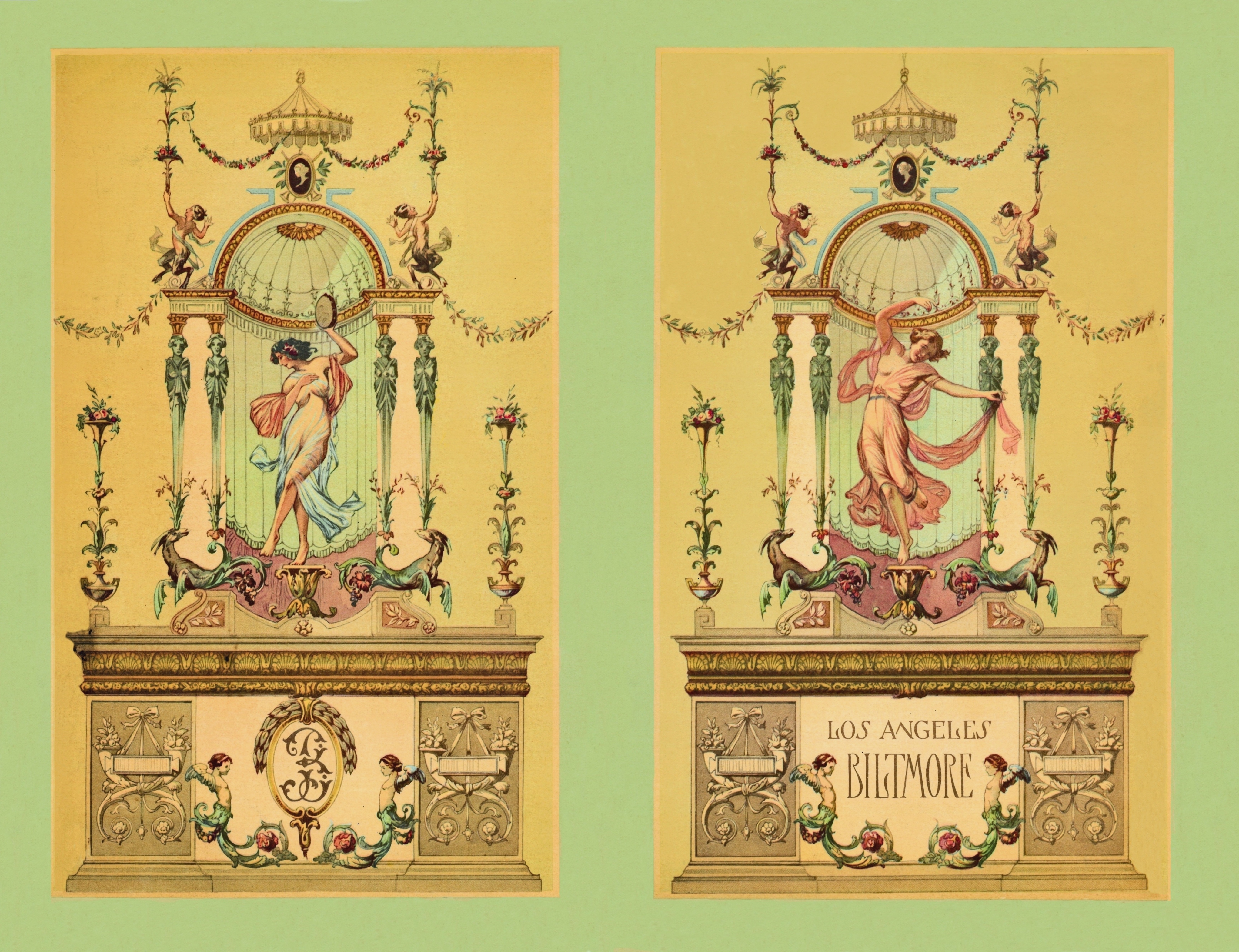
Anderson wrote that on September 29, John Smeraldi gave him a personal tour of the building, which was detailed in the reporter's column the following morning. Led by Smeraldi, Anderson wandered around in a daze, surveying the interior of the hotel and likening it to something out of an Arabian Nights fantasy story. "I felt like Aladdin as I followed him through the mazes of the Biltmore—room after room of ever-increasing loftiness and splendor, much of whose beauty was the work of Smeraldi himself, for he and the other genii of the palace joined hands for the most perfect magic that has ever been known in the glorious history of hotels." Smeraldi led him through the public area, pointing out details and explaining his inspiration for each of the rooms. By the end of the tour, Anderson was overwhelmed and wrote, "When Smeraldi waved me farewell and vanished, I almost thought to see the palace disappear too. But I looked today and found it beautifully intact. Anderson closed with "If you still harbor lingering doubts as to the truth of fairy tales—and the tale of Aladdin in particular—ride up and take a look at little old Los Angeles from the roof garden of the Biltmore."
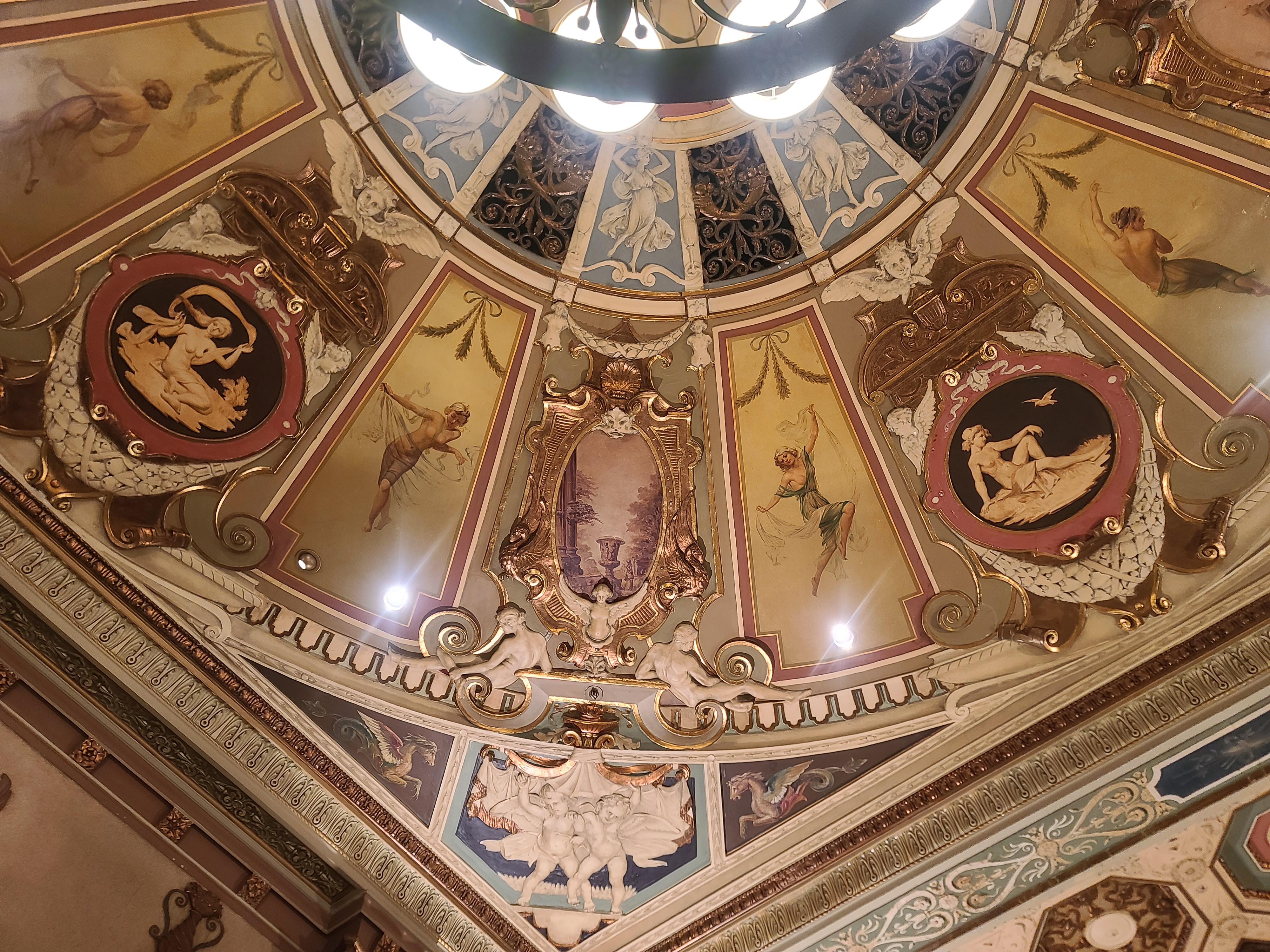
Dress Rehearsal

The hotel opened Monday, October 1, 1923, for normal operations. The Illustrated Daily News reported that the first formal event to take place, however, was a September 28 dinner party hosted by Schultze for "the men who helped him construct the hotel building," but the paper did not elaborate if those men were members of the CIC, Bowman's hotelier train entourage, or those involved with the actual construction process. One day later, Scofield Construction hosted a dinner for subcontractors whose services were employed, and a number of them took out ads in newspapers to indicate that their products and services were on display and were vital to day-to-day operations. On September 29, it was reported that between 15,000 to 20,000 VIPs holding passes issued by stockholders to prominent Southern Californians had toured the hotel from top to bottom. Among these VIPs was Evening Express society columnist, "Suzanne" who reported that she had been invited "behind the scenes" and was stunned, "The magnificence of it all was so impressive that I felt quite lost in the awe of its grandeur." But the event that Suzanne was hotly anticipating was the upcoming opening gala on October 2, explaining that "...all the elite of Los Angeles will be there, it has given the women a chance to deck themselves in gorgeous new gowns. The shops have been busy indeed…" The building was closed to everyone except staff on September 30 for the specific purpose of putting the finishing touches on for the following day. On October 1, 1923 was open to the public, and "by eight o'clock, the hotel lobbies were well filled, with every indication that it would be crowded to capacity later in the day." In addition to curious Angelenos surveying the lobby, the hotel was flooded with East and West Coast hoteliers, local officials, prominent businessmen as well as reporters for the specific purpose of showing off Los Angeles' newest architectural treasure. Among this group were Former U.S. Secretary of the Treasury, William Gibbs McAdoo, and lawyer and former Secretary of State, William Jennings Bryan who were given special invites to a dinner for 100 hosted by John McEntee Bowman that same evening. The Express reported that the "occasion was most felicitous and the honored eastern visitors were loud in their praise of the splendid new hostelry." A formal gala, described by the Record as "the most stupendous society event in the history of Los Angeles" was planned for the following evening.
"One of the Most Impressive Social Events in California History"

The October 2 gala at the Los Angeles Biltmore was the social event of the year, with more than 9,000 applicants begging to be admitted before it was whittled down to a mere 3,000 lucky people. More than a simple celebration of a new hotel, this event was, in effect, a coming-out party for the City of Los Angeles to announce its arrival as a modern metropolis.

Festivities began at 7:30 p.m. and were broadcast on local radio station KHJ. The Daily News reported that Theodore Kosloff's dance troupe situated themselves on the platform above the revolving door (now gone) and gracefully posed for guests entering the Hotel through the Olive Street entrance. Reporter Eileen Hennessy of the Evening Express reported that explosions of fresh flowers covered every surface in the Galeria Real; some of these bouquets were part of the Biltmore's decor while many were 'welcome' gifts from local business owners, contractors and "friends in all parts of the country." Every public space in the hotel was utilized for formal dining space, and an orchestra was stationed in each room. The main musical attraction, Art Hickman and his band, were stationed in the Supper Room. Hickman had been hired as the musical director of the Biltmore and his band could be heard on KHJ during their regular performances. By all accounts, the dance floor of the ballroom was packed.

Guests donned their finest attire in order to attend the gala. In the weeks leading up to the event, both local men's and women's clothing stores advertised their apparel in the local newspapers, suggesting that they had everything one would need to stand out at the Biltmore's gala. Hennessy wrote that "it must be admitted that interest in inspecting the hotel was shared with the gorgeous fashion show. Not only the smartest shops of Los Angeles but those of New York and Paris were called upon to supply gowns for this event." Naturally, it was the female guests' attire that garnered the most attention. Reports along the line of "Mrs. Watson D. Otis wore ivory velvet trimmed in rose point lace and a girdle of pearls" or "Mrs. Charles O. Caufield wore an imported cloth of gold costume trimmed in Russian sable" ensured that these society women got the notoriety they desired. The National Hotel Reporter relayed that one partygoer told Biltmore manager, Charles Badd that he "had spent $31,000 dolling up his wife and daughter" for the event. The same report stated that "a bushel or two of diamonds was on display, and the money invested in gowns would suffice to relieve Germany of all financial worry."
One of the more memorable ensembles of the night was a gown worn by designer and local clothes horse Peggy Hamilton. Hamilton, the Stephanie Edwards of her day, was a well-known, well-liked local media personality who had made a name for herself as the fashion reporter for the Times and a radio commentator. Hamilton had designed an ivory satin gown for the occasion that was hand-painted by John Smeraldi to match his artwork in the ballroom. She paired the gown with painted satin shoes and a wig described as a "blonde with curls in pastel tints." Hamilton christened the gown as "the Biltmore," and Hamilton was, thereafter, referred to as "the Biltmore Girl." Before "retiring" in 1934, Hamilton would facilitate fashion shows and stage photo shoots utilizing the Biltmore as a backdrop.

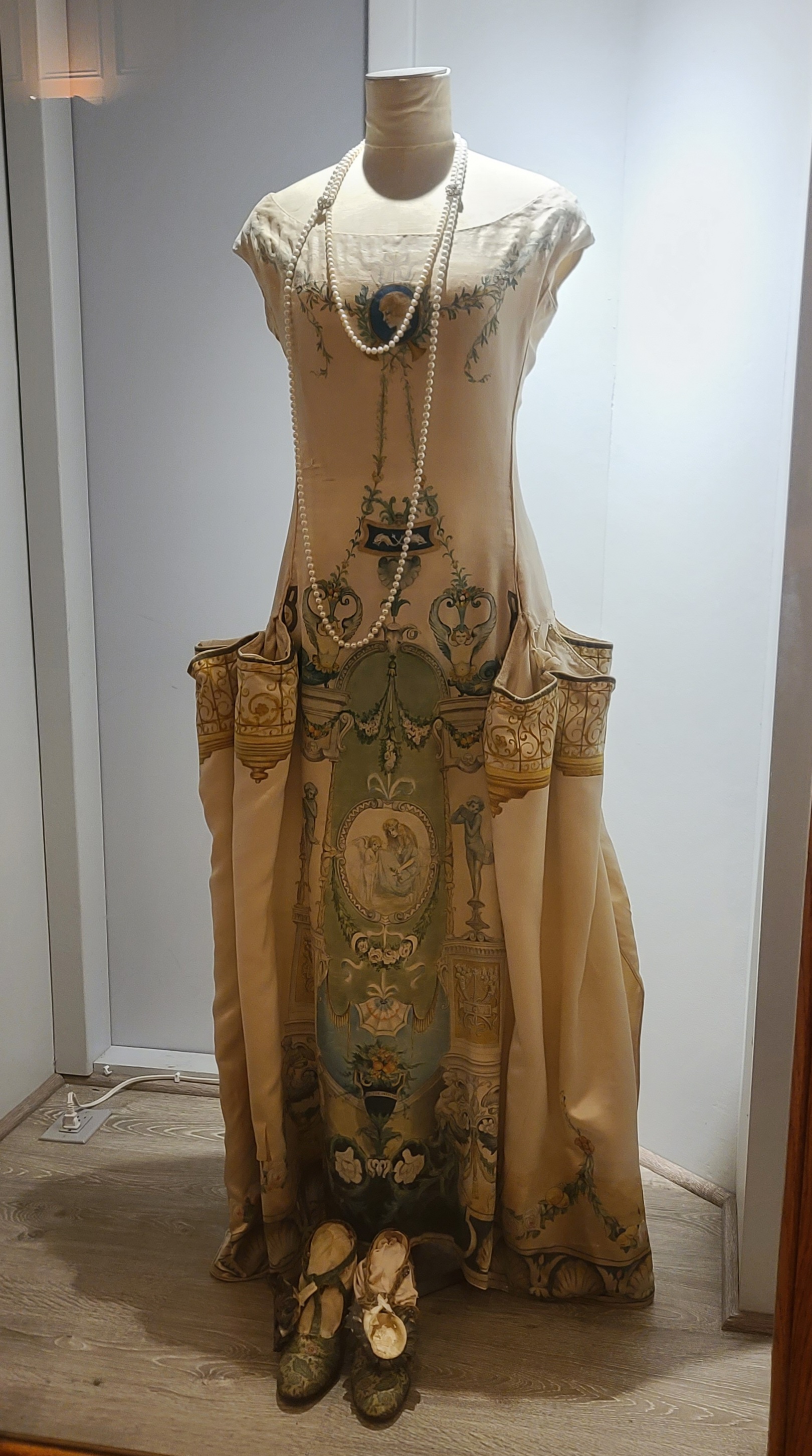
A guest list from that night, if one does exist, would be a fascinating relic weighed down with 3,000 names that have been largely lost to the ages. An assortment of names were strewn about in the local papers with only a handful still recognizable most notably the aforementioned Bryan and McAdoo; stuffed within a handful of newspapers were a series of names that retain importance for an assortment of reasons: Ellsworth Statler of Statler Hotel chain, San Francisco Mayor, James Rolph, San Francisco Police Chief Dan O'Brien, Banker Amadeo Gianini (Bank of Italy), Banker Joseph Sartori (Security First National Bank) District Attorney Asa Keyes, James Irvine III, Department Store owner Arthur Letts, Judge William Rhodes, lumber tycoon C.C. Ganahl, attorney Isidore Dockweiler, Adolph Bernheimer (Yamashiro), film director King Vidor and his wife, actress Florence Vidor, director Fred Niblo, and actors Pola Negri, Douglas Fairbanks, Mary Pickford, Gloria Swanson, Mae Murray, and Los Angeles Mayor George Cryer were all reported to have been in attendance. Times writer Cora Young recorded many of the guests in her October 3 column covering the gala, but it doesn't appear to be a comprehensive list. One attendee, Michael Levee, the President of United Studios, his sister Rose, and two friends from San Francisco were identified as attendees in the most unfortunate way; as the group were leaving the ball, they were followed home and robbed of $17,000 worth of jewels. Smaller newspapers throughout California were elated to drop the names of locals who who had been invited; the Monrovia Daily News, for example, happily claimed two Monrovia residents, Mr. and Mrs. C.E. Van Landingham, among the attendees, and explained that the affair was "one of the most remarkable occasions in the social life of Los Angeles." The Long Beach Press-Telegram, by comparison, only managed a vague mention that "Long Beach was well-represented at the opening banquet," but no specific names were dropped; the paper did, however, note that the ball was "one of the most impressive social events in California history." The festivities carried on into the following morning, with Berthon writing that "in the little hours of the morning when the last strains of music died away, and the last guest had departed, and the last light went out, a very great night, a very noble revel had ended."
"The Last Trace of its Bygone Esthetic and Social Provincialism"
While ostensibly a social gathering, the opening gala and the days surrounding it were more than a basic celebration of new lodgings in the City of Angels. These events were a concerted effort to announce to the rest of the country that Los Angeles was going to be a player on the world stage and this building was evidence of that. L.A. civic leaders had every expectation that this gathering of VIPs and national "power players" would help to spread the gospel of Los Angeles as a sophisticated American city both far and wide.
Hospitality service VIPs who were lured to Los Angeles with the promise of an extravagant cross-country train ride saw, firsthand, that Los Angeles was maturing and was capable of projecting a standard of luxury and sophistication that seemed to be unthinkable 15 or even 10 years earlier. It was reported that during a speech that was broadcast over the radio "as far north as British Columbia, down in Mexico and over in Honolulu" that Statler Hotel chain owner E.M. Statler told the audience that he "took his hat off to the Biltmore" declaring it "the finest in the world." Charles Gehring, a particularly important name in the hospitality industry thanks to his nationally distributed Gehring Hotel Directory and Tourist Guide as well as the industry publication he owned, the New York-based National Hotel Review, summarized the Los Angeles Biltmore as "an extraordinary demonstration." Ghering claimed that "the Biltmore's opening on Tuesday evening smashed to smithereens all previous records for successful hotel openings" and the new hotel would be "the last word in hotel construction, equipment, furnishings, and general environment."
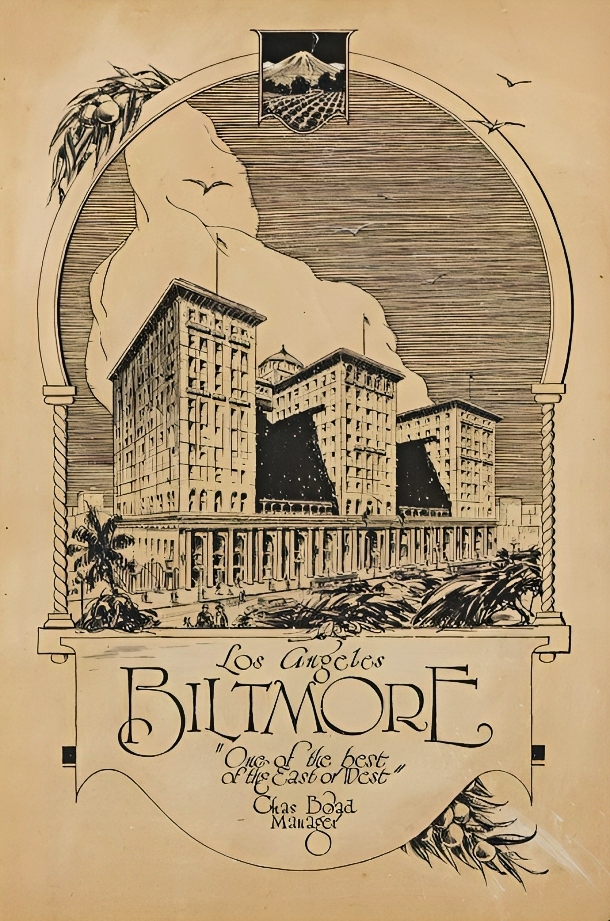
Albert Crockett, a New York writer who was able to experience the grandeur of the Biltmore on opening night, also detailed his experience in print. Crockett, the one-time foreign correspondent for both the New York Herald and The New York Times had, by 1923, become the editor of World Traveler Magazine. This visit was not his first time in Los Angeles, but the gala marked the first time in over a decade that he had been back to Los Angeles. He shared that his first visit had been memorable for all the wrong reasons.
"I remember on my former visit here, I stayed at what was then one of the leading hotels, and one evening, when a few of us were sitting in the lobby, a gigantic rat made its appearance from a dark corner and surveyed the guests with an air of curiosity. I was told that this was an unusual phenomenon, but the city had been suffering from a scourge of rats of the time."
This impression was, most decidedly, not what civic leaders hoped would color visitors to Los Angeles, but Crockett noted that he had seen "great changes in the city since I was here last." He was particularly impressed by Los Angeles' newest civic asset, explaining that "of all the improvements, the Biltmore ranks first." Crockett would go on to write that "Los Angeles of today has become a metropolis. I hardly know the place. Such institutions as the Biltmore will make it rank with the chief centers of the world."
Chandler Sprague, a columnist for the Baltimore Sun and sometime contributor to the Los Angeles Examiner, explained that the gala allowed all the right movers and shakers to be seduced by this stunning addition to our civic portfolio. The hotel, Sprague explained, was destined to become the heart of the city, writing that "conscious of its beauty, but diffident as a debutante, [The Biltmore] stepped to the edge of the stage last night in a glorious party and launched itself head first into the center of social life of Los Angeles and the city felt the murmurs of awed appreciation that marked the debut of the Biltmore were more eloquent than billows of reverberating applause."
One name that would carry weight among the upper echelons of American aristocracy also found reason to sing the Biltmore's praises. Cornelius Vanderbilt IV, the black sheep of the Vanderbilt family (he chose a life in newspaper publishing over something more 'respectable'), was one of the gala attendees. Vanderbilt was born and raised in New York society, so if there was anyone who could attest to the luxury of the Biltmore and the evolving status of Los Angeles, it was him. After arriving in L.A., Vanderbilt founded the Illustrated Daily News newspaper. The morning after the ball, he penned an editorial expressing his faith that the Biltmore was "something different for the west" because "The atmosphere is eastern." He relayed that "the Biltmore was the style center of California" and that it would "continue to be the most stylish headquarters in the southwest." Vanderbilt explained that the Biltmore helped establish a bond with New York simply by virtue of capturing the essence of New York in a single building, summarizing that "hands across the continent today. New York greets Los Angeles."
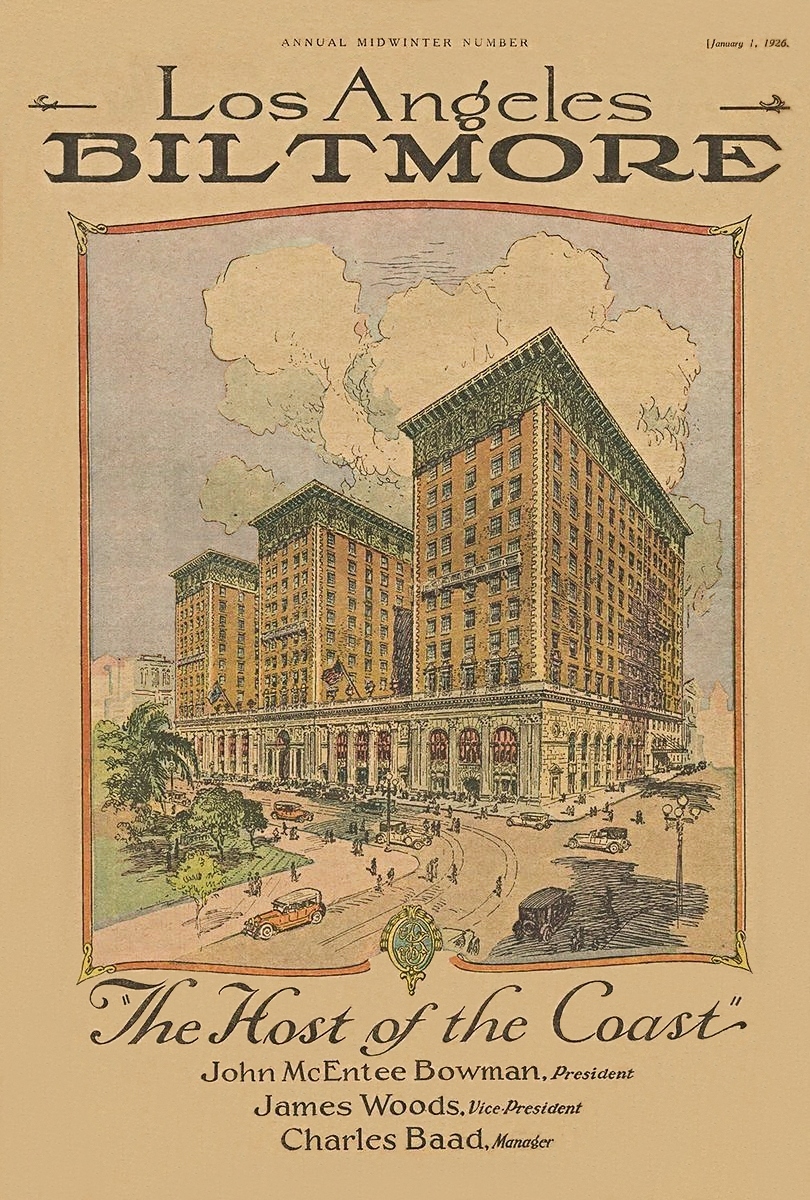
Over the next few years, the hotel would be featured in publications such as Architectural Digest, Architectural Forum, Architect and Engineer, and Architecture and Building (among others) which brought national exposure to both the Biltmore and, more importantly, Los Angeles. Of course, the hotel was a featured attraction in the Times' annual Midwinter edition for 1924 and would be a staple in advertisements throughout the life of the Midwinter's run. The Los Angeles Times' Midwinter editions were the ultimate Southern California booster material selling Los Angeles to the rest of the country. Published annually, the Midwinters were sent across the country to entice friends and family of Angelenos for a visit or, perhaps, something more permanent. At its most superficial level, the Midwinters were, as LAist put it, a way to "taunt frozen easterners" by emphasizing L.A.'s mild winter climate. At its most effective, it was public relations material highlighting commercial progress, economic & vocational opportunities, as well as art, culture, recreation, and any other notable civic progress, both real and exaggerated. The 1924 edition included a write-up by Times staff writer Henry K. Silversmith entitled "My Impressions of the Biltmore." This piece was tantamount to a commercial for the hotel in print form, with Silversmith going into painstaking detail regarding the style, decor, and amenities found throughout the building; Silversmith noted, "unobtrusive, luxury and beauty is the keynote of the Los Angeles Biltmore Hotel with its undisputed view of Pershing Square from Fifth and Olive Streets."

The passing decades reinforced the Biltmore's role in helping Los Angeles to assume its place in the world, seemingly reaching a crescendo in 1960 when it hosted John Kennedy and his campaign during the 1960 Democratic National Convention. By that time, most of the men who had pushed the Biltmore into existence were no longer around to see what their vision had actually accomplished. The intent behind the Biltmore was, perhaps, best summarized by an editorial in the October 2 edition of the Los Angeles Record,
"Los Angeles will rise to the Biltmore, will shed the last trace of its bygone aesthetic and social provincialism, for the Biltmore will indubitably have a profound and lasting effect on the public consciousness. With supernormal expansion, the acorn has become the oak, the pueblo, the city, the city, the metropolis. And in the Biltmore, the metropolis has spawned a lusty child, a child that guarantees through his monster proportions, the future of its sire."
Over the ensuing century, the Biltmore would maintain its role as a civic envoy working to change impressions about Los Angeles' identity as both a national and international municipality. Whether conjured up in civic folklore, depicted in film or television, staged for soirees that have redefined the business and entertainment sectors, or hosting political summits that have shaped both national and international politics, the Biltmore is integral to Los Angeles. Since it opened its doors on October 1, 1923, the hotel is rooted in our civic narrative and is ingrained in our collective social, cultural, and political soul. The Biltmore represents Los Angeles at its very best.
